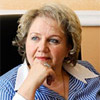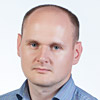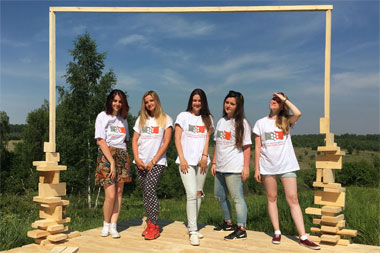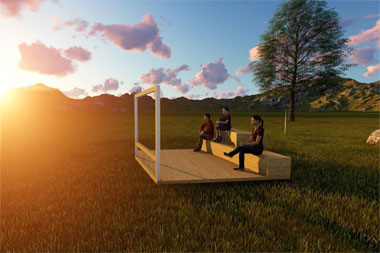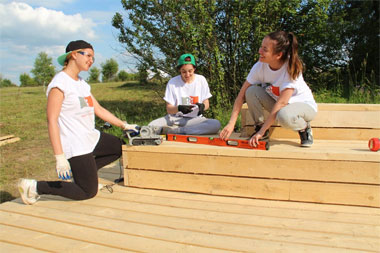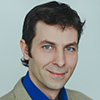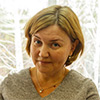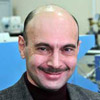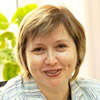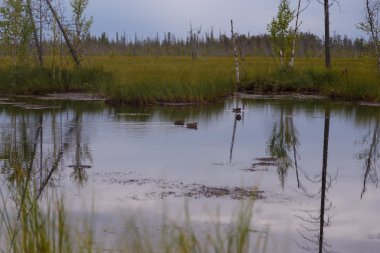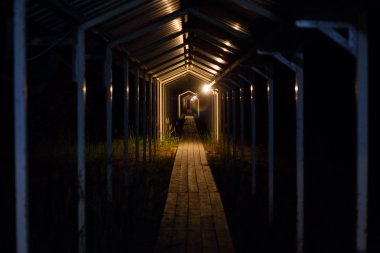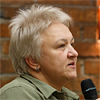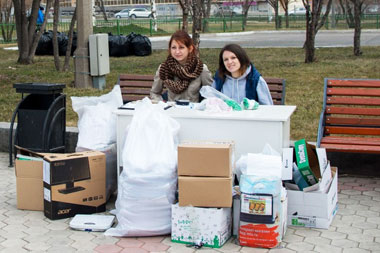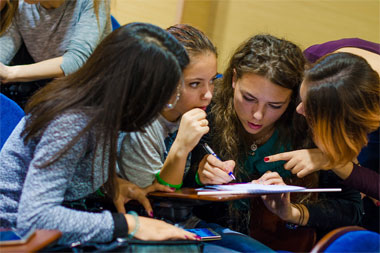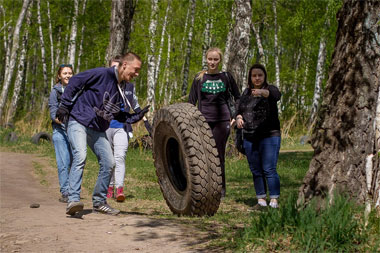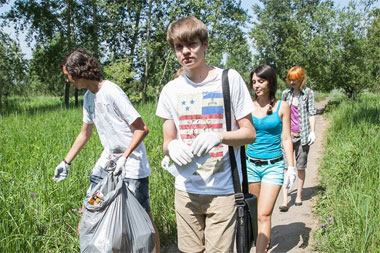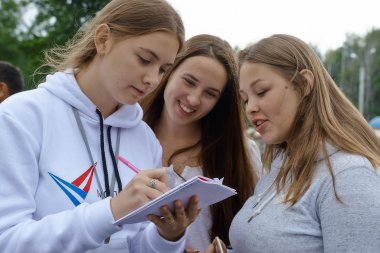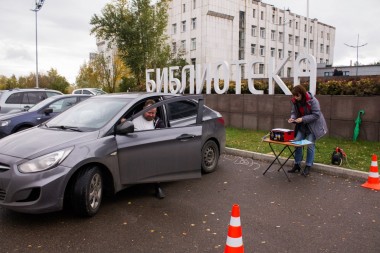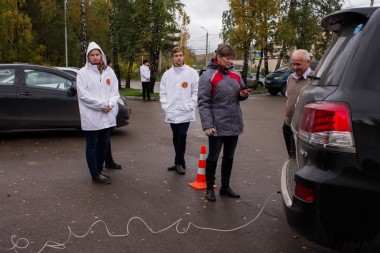Everything in its place. Recycling in SibFU
Siberian Federal University has set up recycling bins for separate waste collection. Now you can collect all the junk you have been carefully sorting since summer and throw it out the right way. You can find recycling containers with marking of different colours on the descent to the football field on Prospekt Svobodny. The memo stickers will help you not to get confused. Still we repeat the rules of separate waste collection:
- The green bin is for clean glass; the glass can be crushed. However, you shouldn’t throw mirrors, crystal, porcelain, and light bulbs;
- The blue bin is for waste paper, i.e. newspapers, magazines, cardboard, office paper. No food waste, Tetra Pak, photos;
- The orange bin is for PET plastics. Mainly it is for bottles and plastic containers, but you’d better always check for the PET icon.
This is not as difficult as it seems. And we believe that soon you will succeed in making waste separating your habit. In the meantime, you can ask for a consultation with Dmitry, student of ecology major. He will help you to raise awareness and to determine a material’s recyclability.
Also SibFU cooperates with a companies for the recycling of hazardous (liquid, solid, and gas) waste. Each laboratory or medical centre is equipped with temporary storage, special tanks for the waste of different classed), where the waste is kept till it is transported for further neutralization by the recycling company. The university is responsible for the content of bins and labelling of waste according to hazard classes, i.e. medical waste should be vacuum-packed or placed in a disposable packaging weighing no more than 25 kg according to the class of waste. This is enshrined in the SibFU's Environmental Safety Instruction.
At the end of 2021, the following waste results were noted: 2020 and 2021 figures
All the waste that the campus residents will throw into these containers will be taken away for recycling to different cities. We begin to take care of the environment right now, and then, will see, may be the whole city will join us. So, Siberian Federal, are you in?!
#СФУ #SFU #SibFU #ecocampusSibFU
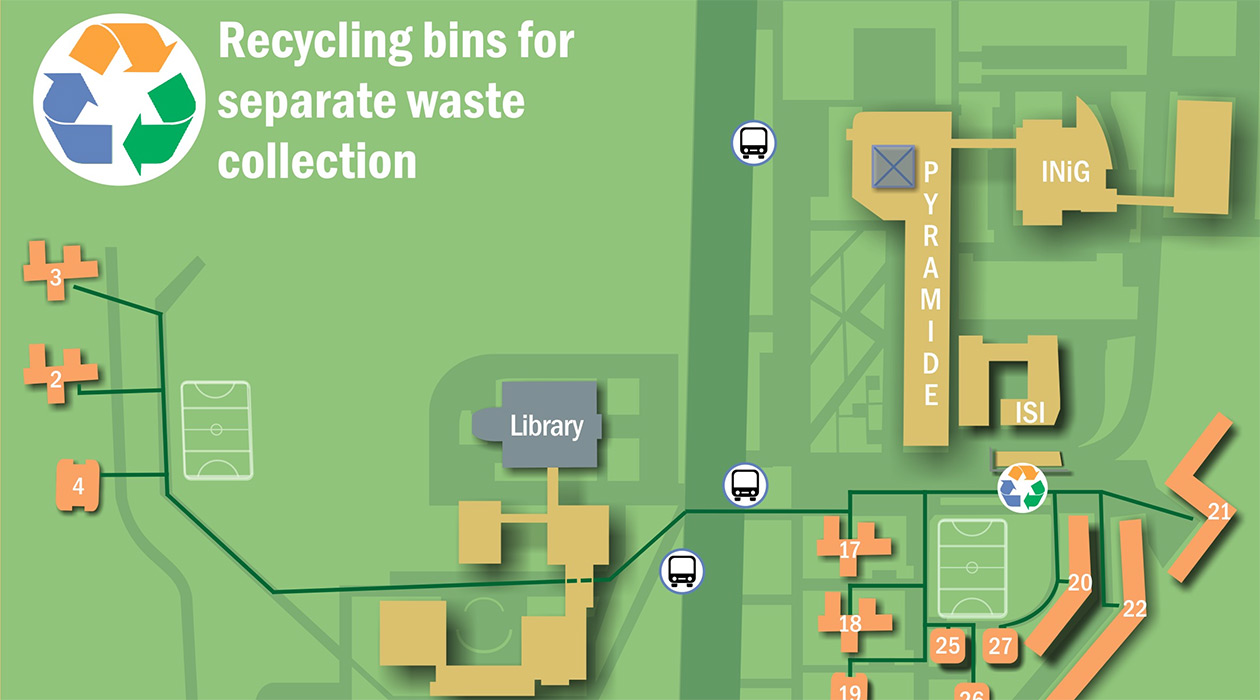
The campus of Siberian Federal University is surrounded by Siberian boreal forest. It is important for us to preserve the unique landscape surrounding the campus, to show the possibility of harmonious coexistence of man and nature.
That is why in the past few years we have been active in scientific research and educational work in the field of sustainable development.
It covers many scientific and technological areas essential for human well-being, a clean environment and the sustainable use of natural resources.
Our goal is to spread the ideas of green technologies for sustainable development. We make efforts to ensure that the results of our research and the latest developments in this area are gradually introduced into various spheres of life of Siberian Federal University. This helps our university students to understand that green technologies are no longer something distant, but something that has took its firm place around us. Residents of the region should see the importance of these technologies for the preservation of the worround us, should see them as a means and a possibility for making people's lives better.
In our everyday activity, we stick to the recommendations of the Agenda for the 21st century, accepted at the United Nations conference on the environment and development in 1992.
We believe that there is a need to implement our existing potential to generate a regional center of research, development and demonstration of a range of environmental and sustainable technologies.
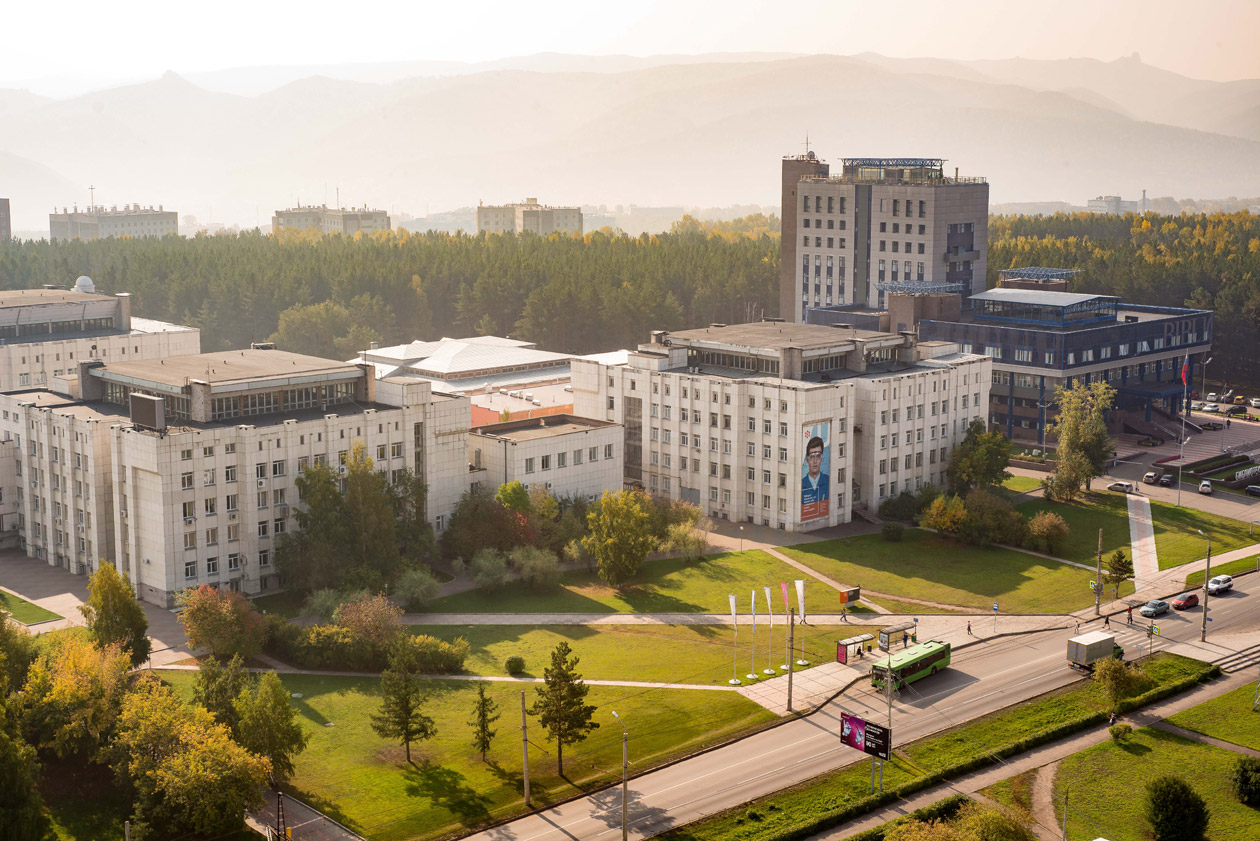
Report about sustainable development of SibFU for 2022
Report on the activities of the SibFU endowment fund for 2021
SibFU pedestrian path policy on campus
SibFU_Program to reduce the use of paper and plastic in campus
President of Siberian Federal University is now a governor of Krasnoyarsk Territory
 On 21 September Alexander Uss, president of Siberian Federal University, officially took office as the governor of the Krasnoyarsk Territory. The solemn ceremony took place in the Krasnoyarsk Grand Concert Hall in the presence of members of the regional parliament, honorary citizens of Kranoyarsk and Krasnoyarsk Territory, representatives of public organizations and enterprises.
On 21 September Alexander Uss, president of Siberian Federal University, officially took office as the governor of the Krasnoyarsk Territory. The solemn ceremony took place in the Krasnoyarsk Grand Concert Hall in the presence of members of the regional parliament, honorary citizens of Kranoyarsk and Krasnoyarsk Territory, representatives of public organizations and enterprises.
According to the results of the elections on 9 September, Mr. Uss took 60.19% of votes. We can add that while presenting the election program, the SibFU President noted that his priorities as the governor will be increasing the investment attractiveness and solving the environmental problems of the region.
Report about SibFU's sustainable investment policy for 2020
9 November 2021
SibFU presented projects on Environmental Improvement of Krasnoyarsk
Siberian Federal University hosted an event on project presentation from SibFU Environmental Fund. During Ecological Review “Krasnoyarsk 2021” ecologists, biologists, representatives of large industrial companies and employees of the Krasnoyarsk Natural Reserve presented projects that are already implemented, in progress or to be put into action. These projects are designed to improve the environmental situation of the region.
Prof. Tatiana Kulagina from the Polytechnic School SibFU and Alexey Obushenkov, a Chief Engineer of Scientific and Production Association "Promavtomatika", presented a project “Ecological Yard” on electric heating of cars in the winter and in mid-seasons. The researchers connected a parking lot for 56 cars to the electric system and found out that emissions from this parking lot decreased by 13.6 thousand tons. The project has already been implemented, and the car owners claim that fuel consumption for car heating has been significantly decreased.
Prof. Valentina Kratasyuk, the School of Fundamental Biology and Biotechnology SibFU, presented the Enzymolum complex. They use luminescent bacteria to test toxicity. With a dry reagent it is possible to measure the toxicity of any medium.
Prof. Nadezhda Suschik, the School of Fundamental Biology and Biotechnology SibFU, spoke about the prospects for the use of biodiesel as a transport fuel, an alternative to petroleum diesel. Researchers suggest using organic-rich bottom sludge and sewage sludge as raw materials. Fats are abundant in algae, including those in Krasnoyarsk reservoirs, and can be used as a basis for biodiesel. In addition, lakes and reservoirs are need to be cleaned each year, so production of biodiesel is environmentally beneficial from every angle.
There were also presentations on environmental awareness of young people, biodiversity of the region, and volunteer projects.
10 September 2021
The environmental inspection “Krasnoyarsk-2021” held in SibFU
 The environmental inspection Krasnoyarsk-2021 was held in the Congress Hall on 6 September 2021. Projects of the SibFU Environmental Fund, that had already been implemented or were planned for the future, were presented within the event.
The environmental inspection Krasnoyarsk-2021 was held in the Congress Hall on 6 September 2021. Projects of the SibFU Environmental Fund, that had already been implemented or were planned for the future, were presented within the event.
Implemented projects of the Fund:
- "Ecological Yard";
- “Natural Reserve ‘Stolby’ without garbage”, “Natural reserve-born forces”;
- Environmental awareness (Literary Salon, Environmental Guide for the Krasnoyarsk Territory).
Promising projects:
- Portable laboratory "Enzymolum" for measuring pollution of the atmosphere, water and land;
- Space monitoring as a tool for assessing and managing the effects of climate change;
- Biotechnological solution to the problem of "plastic plague";
- Production of biodiesel fuel from wastewater treatment plants and bottom sediments of water bodies;
- Tagging of sturgeon to assess the effectiveness of artificial reproduction.
Information
The SibFU Environmental Fund was established in November 2020 in order to implement the practical tasks of the Environmental Charter. The presentation of the first projects of the Fund took place on 20 December 2020.
The main objectives of the fund:
- promotion of events on environmental protection and efficient use of natural resources;
- support for projects on education, science and public awareness;
- formation of an ecological worldview;
- promotion of activities to eliminate and prevent environmental problems on local and global scale.
5 September 2021
SibFU Medical center was licensed to work
 The SibFU Medical Center has received a license to carry out medical activities. Doctors from the Federal Siberian Research Clinical Centre under the Federal Medical-Biological Agency will work at the center.
The SibFU Medical Center has received a license to carry out medical activities. Doctors from the Federal Siberian Research Clinical Centre under the Federal Medical-Biological Agency will work at the center.
The new clinic will operate on lean principles. It will provide a registration desk without traditional walls and windows, comfort zones, a queue management system. There are information terminals and electronic schedule of doctors for the convenience of visitors.
Special equipment for functional diagnostics, neurodiagnostics, mammography, fluorography, radiography and ultrasonography, endoscopic, physiotherapy and clinical diagnostic is installed in the center. Such equipment is meant to provide primary and specialized medical care.
The center comprises 7 sections, a day hospital with 8 beds and an anti-doping control unit. The capacity is up to 400 visits per shift. There will be 82 people of medical personnel, including 36 doctors and 46 nursing staff members.
27 August 2021
SibFU student of environmental studies took part in Presidential Council meeting
 Dmitry Zlobin, a student of the School of Ecology and Geography SibFU, participated in the meeting of the Council under the President of the Russian Federation on the development of civil society and human rights on the topic “Ensuring environmental rights of citizens within waste management”.
Dmitry Zlobin, a student of the School of Ecology and Geography SibFU, participated in the meeting of the Council under the President of the Russian Federation on the development of civil society and human rights on the topic “Ensuring environmental rights of citizens within waste management”.
During the meeting, Dmitry gave a report on “Proposals for the separate collection and recycling of waste, the elimination of unauthorized dumps in Siberia”. He discussed topics of reducing waste generation, developing separate collection and recycling as well as environmental awareness of population with colleagues from Moscow, St. Petersburg, Izhevsk, Voronezh, as well as from other countries, namely India and Germany. Representatives of the Ministry of Natural Resources and Environment of the Russian Federation, Federal Service for Supervision of Natural Resources, regional authorities and supervision body in housing and communal services also attended the event.
19 July 2021
New Natural Park next to SibFU
 On 15 May the project for beautification of the recreational area around the ridge Gremyachaya Griva was presented at Siberian Federal University in Krasnoyarsk. A new natural park is supposed to boost tourism, sports, and recreation of citizens.
On 15 May the project for beautification of the recreational area around the ridge Gremyachaya Griva was presented at Siberian Federal University in Krasnoyarsk. A new natural park is supposed to boost tourism, sports, and recreation of citizens.
The project is focused on conditions for active recreation of the population, as well as the conservation of green spaces. Landscape design and enhancement of the functionality of open areas will be in priority. They will clean the forest park from debris and construct pedestrian paths, sport and theme zones.
Experts are sure that proper organization of pedestrian routes and navigation system will reveal the peculiarities of the ridge Gremyachaya Griva and reduce an anthropogenic influence on the territory.
Alexander Uss, the acting governor of the Krasnoyarsk Territory:
“A civilized recreational place for the citizens is my dream. Krasnoyarsk is obliged to implement this project. We have a unique area called Stolby (translator’s note: a natural reserve near the city), but it is not convenient for everyone. Now it is possible to create a giant park of about 300 hectares. It will be suitable for different activities. After completion of the project Gremyachaya Griva, we will finally be able to use a complex approach and create a unique look of Krasnoyarsk. The project will be completed in three years.”
In addition, the beautification of the natural park will be started from the zone between two streets (Prospekt Svobodny and Biathlonnaya ul.). The site will be a landmark of the city near the Universiade Village and sports facilities located on the territory of Biathlon Academy and Winter Sports Academy. The project is launched by the Krasnoyarsk Territory Government jointly with Siberian Federal University.
Ecological Yard Project Presented at SibFU
On 25 April 2020, the Environmental Fund of Siberian Federal University presented results of the first project Ecological Yard. Representatives of the regional and city authorities, scientists and journalists were among the speakers.
The Eco-fund has been established by SibFU and has been financed by industrial companies. It was created in December 2017, when the list of projects to be supported by eco-fund in 2020 was ready. The Ecological Yard was one of the experimental projects.
According to representatives of the fund, the project's goal was to form a scientific, technical and economic ground for the organization of electric central heating systems for vehicles in winter on the territory of urban households. The project concept was to install electric heaters on the cars of residents of the yard and carrying out the necessary communications to connect cars to the power grid. As a result of the experiment, the participants stopped warming up. Thus both economic and ecological benefits were achieved.
A few dozen cars were involved into the experiment and 50 parking lots were connected to the power grid. Scientists conducted several measurements since February. According to Tatiana Kulagina, a SibFU Professor, the Chair of Engineering Ecology and Vital Activity Safety, they made air measurements for the first time and found out that in calm weather zone the concentration of hazardous substances concentration in exhaust gas in the parking exceeded the permitted level.
Within the project, car owners can save from 18 to 28 thousand roubles a year. At the same time, only from one parking lot for 56 cars, the level of emissions has reduced by 13.6 thousand tons.
Mikhail Gladyshev, the vice-rector of science SibFU, pointed out that people usually do not expect global slogans and list of events for a brighter future. They need results. And the project Ecological yard is a reality for one single yard. В
Improvement of ecological monitoring methods discussed and the report of sustainable development presented at SibFU
On 10 April 2020 Siberian Federal University hosted a roundtable discussion on “Improving Analytical Control Methods for Solving Practical Problems in Environmental Monitoring”.
The participants discussed the strategy for the development of the analytical and methodological framework that could meet the needs of subsoil users operating in the Krasnoyarsk Territory. Also the first report of sustainable development was presented.
The organizers were Siberian Federal University and the State Regional Center for Standardization, Metrology, and Testing of the Krasnoyarsk Territory. According to organizers, the meeting was dedicated to the search of balance between the commercial interests of subsoil users and conservation of the environment and clarity of environmental monitoring methods. Representatives of scientific collectives of SibFU took part in the discussion along with:
- Oil and gas companies;
- Federal Agency on Technical Regulating and Metrology;
- Ministry of Ecology and Efficient Natural Resource Management of the Krasnoyarsk Territory.
Reports on laboratory and analytical capabilities and the spectrum of analytical work, methods, and equipment for monitoring the state of the environment based on bioindication and biotesting were presented by SibFU scientists. Maksim Zhidik, a representative of the company "Krasnoyarskgazprom Neftgazproekt", reported about the problems of analytical support of environmental monitoring and support of geological work during the exploration of deposits.
Ruslan Sharafutdinov, the director of the School of Ecology and Geography SibFU, is sure that modern methods of monitoring and their reflection in tender documentation is the key to successful environmental studies. In this case, dialogue between researchers that develop modern monitoring methods and subsoil users should not be built only according to the classical scenario, where a customer becomes an executor.
“We should strive to build a dual relationship. Both the Centre of Standardization and Metrology and Siberian Federal University have much to offer on the market of environmental and analytical research. Nevertheless, market mechanisms foster very high competition in the area, and this is one of the challenges that we must face,” Ruslan summed up.
As the result, the roundtable came up with a corresponding resolution between officials, scientists, representatives of oil and gas companies and confirmed publication of the report about sustainable development of SibFU for 2017.
CDIO Students Presented Eco-Projects at Forum UNESCO
The students of the Department of CDIO Engineering Bachelor’s Degree (CDIO - Conceive-Design-Implement-Operate) presented their projects at the 1st International Youth Forum of Applied Research “Oil Capital”. The international forum under the authority of the Commission of the Russian Federation for UNESCO was held in Surgut.
Ekaterina Zadvernyak, a student of the School of Non-Ferrous Metals and Materials Science SibFU, presented a project for aluminum cans recycling. In her opinion, the increase in the amount of aluminum waste initiated the search for new processing technologies. The project team studied chemical and mechanical features of the alloy obtained by melting aluminum cans and selected a technology to improve its quality.
“We can reuse the substances obtained after aluminum recycling. For example, we conducted a number of experiments and achieved potassium alum. They can be added to household chemicals, medicines, perfumes,”said Ekaterina Zadvernyak.
Also, student Roman Skripalshchikov presented a hydraulic installation for obtaining briquettes from waste plastic.
“The issue of respect of the environment is actively discussed among SibFU students. In 2017 the University installed recycling trash containers, including a container for plastic bottles. Before recycling, bags with PET bottles require a space for storage from 100 to 120 m2. To use storages more efficiently we designed a vertical hydraulic press for briquetting solid household waste,”said Roman.
Krasnoyarsk hosted a conference «Environmental protection and industrial activities in the North» of «Norilsk Nickel» MMC
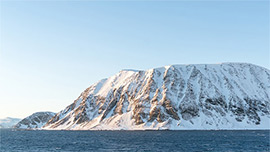 VI Environmental Conference «Environmental Protection and Industrial Activities in the North» of «Norilsk Nickel» MMC was jointly organized by Siberian Federal University (Krasnoyarsk) and Scientific Research Institute of Ecology Problems (Kharkiv) on 12–13 October.
VI Environmental Conference «Environmental Protection and Industrial Activities in the North» of «Norilsk Nickel» MMC was jointly organized by Siberian Federal University (Krasnoyarsk) and Scientific Research Institute of Ecology Problems (Kharkiv) on 12–13 October.
Sections of the forum discussed issues of environmental efficiency through modernization of production and implementation of technical solutions. A particular attention was paid to the issues of implementation of the best available technologies for large industrial enterprises. Besides there was a round-table discussion on «Environmental Legislation: Experience of Application and Trends».
Representatives of the expert community and environmental organizations took part in the conference, as well as top managers and specialists from such large companies as RUSAL and Siberian Coal Energy Company (SUEK). They shared experience in organizing environmental activities and minimizing environmental impact.
Elena Bezdenezhnykh, Vice-President of «Norilsk Nickel» MMC, Member of the Expert Council, highlighted the importance of efforts of «Norilsk Nickel» MMC in the Arctic development:
«The conference is aimed at creating common ground for business, government and society, and at consolidating the largest industrial companies to find the best solutions to the most pressing environmental issues».
SibFU will host international science seminar Arctic Research: Global Challenges
 15–18 November 2017 International Science Seminar Arctic Research: Global Challenges will be held in Siberian Federal University. Master’s students, postgraduates and young researchers from the universities of Russia and China are invited to take part in the event.
15–18 November 2017 International Science Seminar Arctic Research: Global Challenges will be held in Siberian Federal University. Master’s students, postgraduates and young researchers from the universities of Russia and China are invited to take part in the event.
The objective of the Seminar is to bring researchers from China and Russia together for further research cooperation and to make a joint contribution to solving current global challenges.
The Seminar focuses on the Arctic research in various aspects of natural science, engineering and humanities. The Seminar offers networking opportunities to foster cooperation between the Chinese and Russian participants. The plenary meeting and sessions will be moderated by the keynote speakers from Shanghai Institute for International Studies, Polar Research Institute of China, Shanghai University, Fudan University, Siberian Federal University and others.
Menu types module SibFU for 2021
Blood donor days will be hold at SibFU
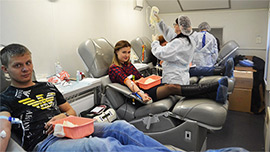
From 2 October to 26 October 2017, the event SibFU Blood donor days will take place on all sites of Siberian Federal University. We encourage students, staff members and lecturers to participate.
The world leading biotechnologists to present advanced research at SibFU
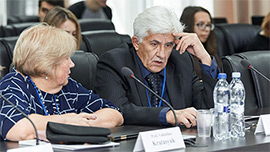 From 26 September 2017 Siberian Federal University holds the II International Scientific Conference «Biotechnology of New Materials — Environment — Quality of Life». The conference is organized by the School of Biology and Biotechnology SibFU with the support from the Russian Foundation for Basic Research.
From 26 September 2017 Siberian Federal University holds the II International Scientific Conference «Biotechnology of New Materials — Environment — Quality of Life». The conference is organized by the School of Biology and Biotechnology SibFU with the support from the Russian Foundation for Basic Research.
According to prof. Tatiana Volova, Head of the Industry Based Department of Biotechnology, School of Fundamental Biology and Biotechnology, SibFU, world leading scientists and researchers in biotechnology and nanomaterials from China, the USA, Turkey, Greece and India participate in the conference.
«The conference is devoted to problems of environment, life support, life quality and potential of biotechnologies. Human and the environment have always been in controversy. An enormous anthropogenic pressure leads to the situation that not only biotic cycles but also human is under the threat of existence. — Noticed Tatiana. —Considering challenges of XXI century such as a large amount of toxic waste, diseases that are complicated to diagnose and treat, depletion of mineral resources, researchers have to develop environmentally friendly technologies. And so, biotechnology with the processes, using potential of living systems in the organisms, comes to the forefront».
Professor Aristides M. Tsatsakis from the School of Medicine at the University of Crete, President of Federation of European Toxicologists & European Societies of Toxicology EUROTOX, will give the report on diagnosis and modulation of aging processes within the Conference:
«Everyone wants to have a long and wealthy life. However, aging process is influenced by many factors. In my study I will talk about measuring the lengths of DNA. When it gets shorter than the critical value, we face instability of DNA and, consequently, various diseases. This applies especially to chronic diseases, because they are primarily associated with DNA instability. At the present time, we conduct a procedure of measuring the DNA length in clinics of Greece. The analysis takes 12+ hours to complete».
In addition, the role and potential of biotechnologies for synthesis of target products and preservation of the environment, applying new biomaterials for medicine and pharmacology, and other issues are to be discussed during the Conference.
Environmental responsibility was discussed at the Yenisei Legal Readings
 Problems of theory and practice of environmental responsibility were discussed at Siberian Federal University. The round-table discussion on the topic «Legal Responsibility: National and International Aspects» was held within the X International Scientific and Practical Conference of Students, Postgraduates and Young Scientists «Yenisei Legal Readings» on 21–23 September 2017.
Problems of theory and practice of environmental responsibility were discussed at Siberian Federal University. The round-table discussion on the topic «Legal Responsibility: National and International Aspects» was held within the X International Scientific and Practical Conference of Students, Postgraduates and Young Scientists «Yenisei Legal Readings» on 21–23 September 2017.
Leading experts in environmental law attended the round-table discussion. According to Liu Hongyan, chief research fellow of the Institute of Law, Chinese Academy of Social Sciences, the study of responsibility issues is the matter of special attention.
«Regulation of relations of human and nature is the cornerstone of legal theory and practice. Currently, almost all laws are aimed at protecting a person, his or her private rights and freedoms. If a person needs timber, we cut down a forest, if natural resources — we extract them. However, this approach is fundamentally wrong. If humanity wants to live in an ecological civilization, we must learn to live in harmony with nature».
As Milana Grigorieva, Head of the Department of Land Law and Environmental Expertise, Law School, Krasnoyarsk State Agrarian University, said, the complicated environmental situation is a result not only of natural processes, but also of systematic violations of law that get more and more various.
«There is chapter 26 “Environmental crimes“ in the current legislation. However, standards of criminal responsibility are not applicable to every situation. In practice, we face problems, such as lack of methods for investigating environmental crimes, complexity of evidence base, and carrying out of expensive examinations. We can introduce criminal liability of legal entities as the most promising way out of the situation, but we still cannot legally solve the problem». — She emphasized.
«This event is not only a bridge between the capital and Krasnoyarsk Territory, but also a platform for communication among practitioners, where we can step aside from a pure science and overcome a gap between theory and practice. Moreover, this conference is significant for making contacts in the sphere of science. We closely cooperate with our Russian and international colleagues, and this cooperation has a long-term perspective». — Said Irina Shyshko, Director of the Law School, SibFU.
SibFU students won the Environmental Cup
Students of the School of Ecology and Geography SibFU became winners of the V Interuniversity Environmental Cup, which was held in Novosibirsk on 18-19 October.
Development of the environmentally friendly economy was discussed at SibFU
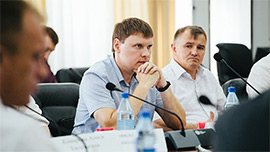 29 June 2017, Siberian Federal University hosted a round-table discussion «Green Economy. Import Substitution and Introduction of the best available technologies for gas purification of industrial emissions and neutralization containing polychlorinated biphenyl-contaminated waste from energy facilities in Central Siberia».
29 June 2017, Siberian Federal University hosted a round-table discussion «Green Economy. Import Substitution and Introduction of the best available technologies for gas purification of industrial emissions and neutralization containing polychlorinated biphenyl-contaminated waste from energy facilities in Central Siberia».
The event was organized by SibFU jointly with the Department of The Federal Supervisory Natural Resources Management Service of Krasnoyarsk Territory and Ministry for Natural Resources and Environment of Krasnoyarsk Territory.
During the round-table discussion, the main educational aspects of technospheric security were considered. The directions of work of the Chair of Technospheric Security were presented. The chair was established at SibFU jointly with the company «Zeleny Gorod» (Green City), which is engaged in processing and burial of waste of 1–3 hazard class. According to the presentation of Tatiana Kulagina, Associate Professor at the Joint Department, it is impossible to train a high-quality specialist without close interaction with an industrial partner. So, attracting students to industrial activities helped to raise the level of practical training of graduates. Moreover, students have the opportunity to use resources of the enterprise to prepare course papers and theses.
The meeting also discussed problems of collecting and recycling polychlorinated biphenyl-containing waste (PCBs). PCBs belong to the group of persistent organic pollutants, monitoring of which in air, water and soil is mandatory in developed industrial countries because of their high danger to the environment and public health.
Ruslan Sharafutdinov, Director of the School of Ecology and Geography, SibFU, drew attention to the prospects of biological reclamation of soils and grounds polluted with PCBs.
In his opinion, the discussion of the know-how in environmental management can greatly contribute to the development of the green economy:
«The green economy is not just a beautiful word; it is a special worldview, and a view of the development of mankind in the future. According to statistical data, from 7 to 15 % of GDP losses are associated with environmental losses. When we talk about the green economy, we mean a level of development of science and technology, when it is possible to achieve greater progress, saving costs and reducing the negative impact on the environment. Green technologies are aimed at improving life and economic growth, they are a response to the request of the society, in which human is an integral part of the social and natural system», — the scientist emphasized.
In addition, the participants discussed economic, legislative and technological aspects of environmental safety and air protection, introduction of the best available technologies for gas purification of industrial emissions, and the use of Russian equipment within the Green Economy program.
SibFU starts the Summer School on reclamation of abandoned industrial zones
 From 27 June to 5 July 2017, Siberian Federal University will start the International Summer School «Sustainable Land Use through Reclamation of Lands of Former Industrial Facilities and Reuse of Building Materials». SibFU has organized this educational event jointly with The Brandenburg University of Technology Cottbus-Senftenberg.
From 27 June to 5 July 2017, Siberian Federal University will start the International Summer School «Sustainable Land Use through Reclamation of Lands of Former Industrial Facilities and Reuse of Building Materials». SibFU has organized this educational event jointly with The Brandenburg University of Technology Cottbus-Senftenberg.
Students from Brandenburg University of Technology and several SibFU Schools (School of Engineering and Construction, School of Business Management and Economics, School of Ecology and Geography, School of Architecture and Design) applied for participation in the event. Representatives of both universities and the Department of Urban Development of Krasnoyarsk will give lectures at the Summer School.
Representatives from the German Higher Institution will clarify the following issues to the participants:
- Handling hazardous and noxious substances that can be placed on the territories of industrial facilities;
- Tests in determining pollution level of industrial areas;
- Reuse of building materials;
- Legal aspects of working in industrial areas.
Besides lecturers, the students will visit abandoned industrial zones of Krasnoyarsk and the environs. In is assumes that within the training the «pupils» will develop concept of conversion of the inner-city and suburbs that would cover the whole set of tasks (architectural, construction, environmental, economic, and legal), which, in turn, will be solved in teams by students of different majors. The territory of the former Krasnoyarsk Woodworking Integrated Plant has been chosen as the main site for the projects design. In addition, the participants will observe the progress of reconstruction of the University building «G».
Note that this year within the Project 5top100, SibFU will host 16 summer school with the participation of international lecturers and students.
WWF expert Aleksey Kokorin to give a lecture at SibFU on climatic change
 29 May 2017, Aleksey Kokorin, a well-known climatologist, honored worker in the sphere of conservation, candidate of science (in Physics and Mathematics), and a director of the program «Climate and Energy» of the World Wildlife Fund (WWF), will give a lecture to the students on «Natural and Anthropogenic Climatic Change: The State of Scientific Knowledge».
29 May 2017, Aleksey Kokorin, a well-known climatologist, honored worker in the sphere of conservation, candidate of science (in Physics and Mathematics), and a director of the program «Climate and Energy» of the World Wildlife Fund (WWF), will give a lecture to the students on «Natural and Anthropogenic Climatic Change: The State of Scientific Knowledge».
The lecture will cover the following topics:
- Analysis of natural climatic change at different time scales: from hundreds of millions of years to the current century;
- Anthropogenic impact on the climate system and its consequences for Russia according to the data of the Hydrometeorological Center of Russia for the last 40 years;
- Projections of Future Changes in Climate up to the end of the 21 centuries;
- International activities and actions of Russia, skeptical attitude to the role of man in climatic change.
In SibFU Scientific Café researchers assess the environmental state
 25 May 2017, the final meeting of this academic year will take place at the SibFU Scientific Café. The meeting will be devoted to biological monitoring of the environment and will be held within All-Russian Week of Climate in Krasnoyarsk Territory.
25 May 2017, the final meeting of this academic year will take place at the SibFU Scientific Café. The meeting will be devoted to biological monitoring of the environment and will be held within All-Russian Week of Climate in Krasnoyarsk Territory.
At present, assessing the quality of soil, water and air is of significant importance. Environmental pollution on both global and local levels is a matter of great concern. Scientists believe that determining both actual and possible degrees of contamination is essential. Prof. Nina Pakharkova, Candidate of Science (in Biology), Assistant Professor at the Chair of Ecology and Environmental Management, School of Ecology and Geography, will tell us about research in this area conducted at SibFU.
The following topics are to be discussed:
- current environment state;
- ways to monitor the environment, differences in approaches to research;
- peculiarities of environmental monitoring.
The meeting is open to all-comers. As usual, there are delicious pastries and tea for the guests. Free admission.
SibFU Scientific Café gave presentation on biological monitoring of the environment
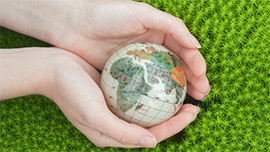 25 May 2017, the final meeting of the academic year took place at SibFU. The meeting was devoted to biological monitoring of the environment and was held within All-Russian Week of Climate in Krasnoyarsk Territory.
25 May 2017, the final meeting of the academic year took place at SibFU. The meeting was devoted to biological monitoring of the environment and was held within All-Russian Week of Climate in Krasnoyarsk Territory.
There were two experts giving presentations at the meeting: Nina Pakharkova, Candidate of Science (in Biology), Associate Professor of the Chair of Ecology and Natural Resource Management, and Yuriy Grigoriev, Candidate of Sciences (in Biology), Professor of the Chair of Ecology and Natural Resource Management, School of Ecology and Geography, SibFU.
Nina shared her research about biological monitoring and told about the role of biomonitoring in these studies, and about advantages of this method compared to physical and chemical methods. In addition, during the meeting the following issues were discussed: drying of dark coniferous forest in the region, the reasons, and research concerning varieties of coniferous trees and their adaptation to different climatic conditions.
Yuriy presented the issue from the position of implementation. He said about the necessary regulations and documents for preparation of the research results and environmental reports, and also about research at the Chair on the behavior of lichen under the influence of various environmental factors and pollution. He presented the diagram, on which the visitors could see unique data on the level of pollution for the main districts of Krasnoyarsk, where the impact of particular anthropogenic factors on the environment could be seen.
Discussion about Ecology from the position of law in SibFU
 12 May 2017, on the eve of the St. Petersburg International Legal Forum, SibFU hosted a scientific and applied round-table discussion on «Legal Regulation of Environmental Aspects of the Activities of Enterprises».
12 May 2017, on the eve of the St. Petersburg International Legal Forum, SibFU hosted a scientific and applied round-table discussion on «Legal Regulation of Environmental Aspects of the Activities of Enterprises».
The event was organized by the Law School of SibFU jointly with the company Norilsk Nickel and with the participation of the Pepeliaev Group's Siberian Office.
The participants discussed the issues of legal regulation of the negative impact on the environment, as well as the practice of law enforcement and possible proposals for improving the legislation. Representatives of the authorities, academic legal science and business lawyers, bachelor’s and master’s students, as well as scientists from related branches of science showed interest in the round-table discussion. The roundtable was moderated by Professor Lyudmila Mitskevich.
The following conclusions and proposals were formulated based on the results of discussion of announced presentations, as well as speeches and reports of the participants:
- Legal administrative and legal economic mechanisms are not in balance in the current legal regulation of environmental legal relations;
- It is necessary to improve the whole system of measures of state impact on the environmental behavior of organizations, including development of effective legal economic mechanisms for stimulating environmental activities, without giving priority to measures of administrative enforcement, since increasing administrative fines is not effective;
- Strategic directions of environmental law do not receive critics from scientists, but national environmental legislation does not fully guarantee the system of environmental rights of citizens; the state should fulfill the responsibility to bring legislation into line with international standards.
A presentation on paleogeographic research in SibFU Scientific Café
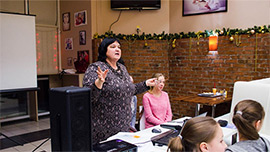 6 February 2017 in SibFU Scientific Café there was a presentation about climatic change and paleogeographic research within the Regional Days of Science. The topic of the event coincided with the Russia's Year of the Environment.
6 February 2017 in SibFU Scientific Café there was a presentation about climatic change and paleogeographic research within the Regional Days of Science. The topic of the event coincided with the Russia's Year of the Environment.
The following experts in paleontology gave speeches:
- Galina Yamskikh, Doctor of Sciences (in Geography), Professor and Head of the Department of Geography, School of Ecology and Geography, SibFU;
- Natalia Zharinova, Head of the Laboratory of Complex Physical and Geographical Research;
- Daria Bolkunova, Assistant of the Department of Geography, School of Ecology and Geography, SibFU.
At the meeting, the guests learned about the information that pollen of plants can give us, and about climate influence on the soil under our feet. In addition, there was a discussion about conchology, the study of mollusk shells. The participants talked about determining temperature in the region of mollusk habitat by the color of its shell, and moisture level by the inner shell structure.
Also, Galina told the guests about the recently published report by the Russian scientists. According to the collected paleogeographic information, in the nearest future, our planet is faced with the prospect of global cooling, rather than warming.
Autumn Planting of the “Studgorodok” Area of the Campus Have Been Completed
Over 800 trees and shrubs were planted in the first phase of the campus landscaping of Siberian Federal University in Krasnoyarsk city campus.
«To decorate the entrance area we chose the bright and lasting blossom apple and lilac trees, cotoneaster will perform the role of hedge, and the transition from training to the recreational area will be filled by coniferous trees»— the vice-rector of SibFU Roman Shorokhov said.
Environmental Quiz for Students of SibFU
 September 30, 2016. The university hosted the annual youth environmental FSC-Friday. Traditionally the Youth Union of SibFU organizes the event and draws the attention of students of SibFU to forest issues. The event was supported by two international organizations: the Forest Stewardship Council (FSC) and World Wildlife Fund (WWF). All participants were invited to attend the event.
September 30, 2016. The university hosted the annual youth environmental FSC-Friday. Traditionally the Youth Union of SibFU organizes the event and draws the attention of students of SibFU to forest issues. The event was supported by two international organizations: the Forest Stewardship Council (FSC) and World Wildlife Fund (WWF). All participants were invited to attend the event.
23 teams took part in the Eco-quiz, enjoyed a multitude of positive emotions and spent the Friday night with benefit!
KhTI Opened a Students Garden Square
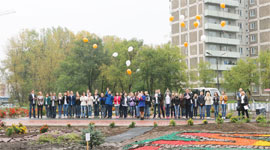 The opening of the first part of the Student Garden Square took place in Khakassia Technical Institute (KhTI) — a branch of SibFU.
The opening of the first part of the Student Garden Square took place in Khakassia Technical Institute (KhTI) — a branch of SibFU.
The Student Garden Square was a gift for the 85th anniversary of the city of Abakan, for the 25th anniversary of the Republic of Khakassia and a significant event in honor of the upcoming 50th anniversary of KhTI. The next spring this place will have the Institute`s graduates avenue, lanes of the prominent manufacturers and honored builders, as well as an amphitheater. I am certain that the square will be one of the places of attraction for not only the student's youth, but for all Abakan citizens and a favorite place for a family holiday.
An Apple Alley is to Open the “Green Corridor”
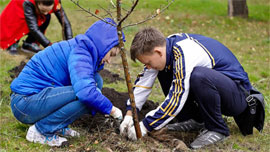 SibFU launched a project for landscaping the campus of the university. The campus beautification concept was presented in early summer 2016. The first stage includes planted apple trees, shrubs of cotoneaster and pine. The implantations took place along the street named after academician Kirensky in the territory, which is not going to be affected by the construction works.
SibFU launched a project for landscaping the campus of the university. The campus beautification concept was presented in early summer 2016. The first stage includes planted apple trees, shrubs of cotoneaster and pine. The implantations took place along the street named after academician Kirensky in the territory, which is not going to be affected by the construction works.
According to the concept of gardening the anthropogenic landscape is to be integrated into the natural landscape, respectively, in the direction from the city center towards the birch grove the species composition of trees and intensity of planting are to be changed.
Krasnoyarsk Citizens Will Have an Opportunity to Check the Environmental Friendliness of Personal Cars in the Framework of the Project “0% BLACK SKY”
 From August 27 at SibFU parking lot every motorist of Krasnoyarsk can check the amount of the contribution his (her) car makes to the “black sky mode”. The verification of emissions for compliance with environmental standards does not take more than 10 minutes, all participants get “An emission control card” and recommendations on how to reduce harmful emissions. Owners of harmless cars will be given the ecology sticker “0% black sky!”.
From August 27 at SibFU parking lot every motorist of Krasnoyarsk can check the amount of the contribution his (her) car makes to the “black sky mode”. The verification of emissions for compliance with environmental standards does not take more than 10 minutes, all participants get “An emission control card” and recommendations on how to reduce harmful emissions. Owners of harmless cars will be given the ecology sticker “0% black sky!”.
The event "0% Black Sky" is organized by the Student Union Committee of SibFU and Youth headquarters of Oktyabrsky District Administration of Krasnoyarsk.
SibFU Zero Emission Vehicle_ZEV_Policy
Students of the School of Architecture and Design of SibFU “Established “a Window to Nature”
Students of the School of Architecture and Design of SibFU became finalists of the All-Russian competition for the National Award in the field of ecological architecture and construction “Eko_Tektonika 2016”. The organizers of the competition established a new nomination “All Clear”. It was this nomination, where our students managed to express themselves as architects. The awarding ceremony and presentations of the projects were held in the framework of the Festival of the green architecture and ecological lifestyle in the Ecopark “Yasno Pole” (Clear Field).
“To implement the ideas we were given a platform, timber and tools: saws, hammers, screwdrivers. Our designed project had to quickly be adapted to the terrain. It was necessary to align, to hammer some piles. The most severe undertaking was polishing. The participation in the contest gave us a lot of experience, it became clear that our profession is not only about creating projects on paper, but also about testing the proposed ideas on yourself “— the team captain Alina Stepanchenko narrates.
The installation of our girls, “Window to Nature” was the only student work, which reached the finals. Of course, the finalists receive awards. The grand prize of this contest was the participation in the Summer School of green architecture.
SibFU Has Become a Venue for Environmental FSC-Quest
September 25, 2015. A big environmental FSC-Quest was organized by the student organization “the Youth Union of SibFU” under the auspices of the Forest Stewardship Council. The quest was aimed at promoting respect for nature and people paying attention to forest issues.
The number of teams was more than last year — 23, (in 2014 the number of teams was 19)! Participants showed ingenuity, activity and showed that they are able to perform various tasks on environmental organizers in a friendly way. Each team had its own distinctive mark, the embodiment of their full imagination.
In addition to the quest, the participants read a rap, calling for respect for forests, performed a sketch about felling trees accompanied by the beatbox. All of that looked unusual and creative. The winners were awarded by tasty prizes and stylish FSC products.
SibFU Pricing Regulation Policy 2021
Exhibition on Renewable Energy Opened a Russian-German Dialogue at SibFU
 June 8, 2015. The official opening of the exhibition “Renewable Energy Sources — German Experience” was held at SibFU. The opening of the exhibition was confined to the visit of a German delegation to the Krasnoyarsk Region. The delegation was composed of representatives of the German House of Science and Innovation in Moscow, German Agency for Energy, Ministry of Science, Research and Culture of Brandenburg, representatives of the scientific and university community of Germany.
June 8, 2015. The official opening of the exhibition “Renewable Energy Sources — German Experience” was held at SibFU. The opening of the exhibition was confined to the visit of a German delegation to the Krasnoyarsk Region. The delegation was composed of representatives of the German House of Science and Innovation in Moscow, German Agency for Energy, Ministry of Science, Research and Culture of Brandenburg, representatives of the scientific and university community of Germany.
The technological exhibition was developed by the Ministry of Economy and Energy of Germany and the German Agency for Energy. The exhibition includes about 30 presentations, which in an accessible form tell visitors about:
- main types of renewable energy;
- benefits of various technologies of its production;
- principles of these technologies and their conditions of use;
- as well as high-tech solutions in this field.
“When it comes to the field of alternative energy, Germany is now a recognized world leader: some of the technologies displayed at the exhibition are not represented in the region. But there is a growth point, there are interested companies and, most importantly, there is interest of the leadership of the region and understanding that development in this direction is vital, especially due to a reason that renewable energy is closely tied to solve both environmental and economic problems”,SibFU Rector, academician Eugene A. Vaganov said.
On behalf of the German House of Science and Innovation guests welcomed its head Dr. Gregor Berghorn.
“For just 150 years humans have been burning oil and gas, used resources which nature has created over hundreds of millions of years. We can clearly see that in the future only a few decades away we will face a harsh necessity of the transition to renewable energy sources. Opening the exhibition at the largest university of eastern Russia, we want to demonstrate innovative energy technologies, which we have in Germany. I am convinced that the field of energy efficiency is a good platform for the development of cooperation between Russian and German research scientists”,— Dr. Berghorn noted.
Scientific Research Projects
- The project “Investigation of the state and the territorial distribution of the Evenk reindeer population”
- The study for creating the unique material of autoclaved coal pitch obtained by thermal dissolution of coal – the processing of finely divided coal and an organic solvent at high temperature and pressure
- The project for the development of technologies of improving the environmental performance and efficiency of a coal-fired thermal power station
- The study of power of thermal emissions of fires in the taiga forests
- The development of a resource-saving device for the production of heat and power fueled by waste products
- The study of botanical gardens to assess factors influencing the intensivity of colonization of plants by insects
- The research on energy transfer in molecular aggregates and complexes of the photosynthetic leaves of living plants
- The development of the automated systems of agricultural monitoring for the municipal districts of the Krasnoyarsk Region
- The mathematical model of adaptation of living beings to the environment
- The project of the nationwide data bank of wood samples
- The study of the effect of gamma irradiation on the “sleeping” plankton in order to study the extent and consequences of human impact on the ecosystem of water bodies
- The creation of an extensive network of stations and dendro-climatic millennial tree-ring chronologies of the Northern Eurasia
- The project “Digital Microanatomy of Growth Rings in Physiology, Ecology, Climatology and Archeology”
- The express-test for the determination of soil toxicity on the basis of the method of bioluminescence
- Expeditions to Antarctica in order to accommodate the GLONASS measuring stations
- The development of a 3D-projection interactive map for the complex of waste processing
- The project “Genetic Library of Forest Insects”
- The Red Book of Khakassia
SibFU scientists discovered material that can make solar cells more efficient
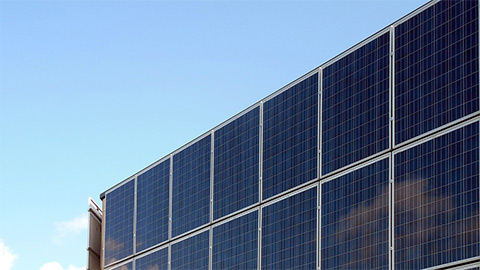 Researchers at Siberian Federal University, together with colleagues from the Royal Institute of Technology (Stockholm, Sweden), discovered new properties of material based on palladium, which can increase the performance of solar cells.
Researchers at Siberian Federal University, together with colleagues from the Royal Institute of Technology (Stockholm, Sweden), discovered new properties of material based on palladium, which can increase the performance of solar cells.
Palladium diselenide is a promising material whose properties have not yet been fully studied. For example, it was reported that its two-dimensional form can be effective in photocatalysis - the process of splitting water into hydrogen and oxygen when exposed to sunlight, which can be used to produce ecological fuel. Researchers have recently learned how to synthesize single- and double-layered versions of the PdSe2 composition, but the strengths and weaknesses of these materials remained unknown until recently. The researchers used high-precision calculation methods for the first time and managed to study the electronic and optical properties of single- and two-layer material based on palladium diselenide in detail, which, as it turned out, can absorb solar energy more efficiently than silicon-based material used in solar batteries.
“The material demonstrates higher conversion rates of solar energy into electrical energy due to a wider spectrum of energy absorption compared to silicon-based elements used today as semiconductors, and therefore can significantly increase the efficiency of solar cells. <...> Palladium diselenide (PdSe2) can be used as an independent material for solar cell elements in the construction of spacecraft and artificial Earth satellites, since the material efficiency in most cases justifies the costs in the space industry”, — says one of the researchers from Siberian Federal University Artem Kuklin.
To carry out high-precision calculations of material properties, scientists used the Akademik Matrosov supercomputer, located in Matrosov Institute for System Dynamics and Control Theory of the Siberian Branch of the RAS.
“The share of “solar” energy will steadily increase in Russia due to the high environmental friendliness and relative cheapness of this method. Today in our country there are 10 “solar” stations with a total capacity of about 100 MW, which is 0.04% of the total installed capacity of the Russian power system. In Yakutia, the cost of electricity from diesel generators is very expensive and here solar installations can significantly reduce the cost of energy supply. Our goal is to develop more advanced materials so that the efficiency of solar cells increases”, — says Artem Kuklin.
The results of scientific work were published in the journal Physical Review. The researchers plan to continue their work exploring the effect of defects on its properties and the probability of their formation. Having learned to manage defects, scientists will be able to create material with predictable characteristics.
30 July 2019
Nanofluids from SibFU physicists will help Siberians to get warm
 Research by scientists from the School of Engineering Physics and Radioelectronics of Siberian Federal University will help to increase the efficiency of the evaporation of liquids using nanoparticles. Physicists have studied the mechanism of evaporation of nanofluids, as well as the effect of the size of nanoparticles and the material they are made of, their volume concentration and properties of the base fluid on the velocity of evaporation.
Research by scientists from the School of Engineering Physics and Radioelectronics of Siberian Federal University will help to increase the efficiency of the evaporation of liquids using nanoparticles. Physicists have studied the mechanism of evaporation of nanofluids, as well as the effect of the size of nanoparticles and the material they are made of, their volume concentration and properties of the base fluid on the velocity of evaporation.
“Such nanofluids can increase the efficiency of heat transfer and save energy in the systems of central heating. The obtained effect is not limited by this. Evaporation of liquids is used to create micro heat pipes, compact heat exchangers, capillary pumps, and fuel cells. Fluid evaporation is also the main fire extinguishing mechanism. Evaporation “works” during the combustion of liquid fuels, in the ventilation and air conditioning systems, in membrane technologies, as well as in the self-organization formation of fractal-like structures of nanoparticles with complete evaporation of the base fluid. At the same time, the evaporation rate is a key parameter affecting the efficiency of all these technological processes. The addition of nanoparticles to the base fluid allows it to regulate and manage the data of the process accordingly,”— said Alexander Lobasov, Senior Lecturer at the Department of Thermal Physics.
It was found that nanofluid evaporates faster than the pure base fluid. And the observed effect is more intense the higher the concentration of nanoparticles in nanofluid is. The rate of evaporation of nanofluid depends also on what kind of fluid was used as the base. For example, nanoparticles based on isopropyl alcohol evaporate much faster than water-based ones.
“Krasnoyarsk Territory is a region with a sharply continental climate, the issues of energy efficiency and energy saving are fundamental for us. The use of nanofluids as a coolant can significantly, by tens of percent, increase the efficiency of the already existing heating equipment in the power industry, housing and utilities and industrial sectors of the region. In addition to the energy complex tasks, the project solves problems that are relevant for the electronic industry of the region. JSC NPP “Radiosvyaz” and JSC “Reshetnev Information Satellite Systems” both need innovative systems for removing heat from electronic equipment,”— says Alexander Lobasov.
Physicists studied the integral and local characteristics of evaporation and heat transfer of nanofluids at different temperatures using the method of experimental thermogravimetry (a change in the mass of a sample depending on increasing or decreasing temperature is recorded). Also during the experiment, non-stationary measurements of the parameters of evaporation of nanofluids at variable and constant temperature of the medium were carried out.
In addition, a theoretical study prompted scientists to one more applicable outcome. It turned out that after complete evaporation of the nanofluid, an unusual microstructured or cellular surface consisting of nanoparticles remains. The higher the volume concentration of nanoparticles in the fluid is , the larger the cell. According to the scientists, this surface can be used as an absorbent for the development of new medicines, filters, sewage treatment plants or systems to eliminate man-made disasters, such as oil spills.
The study was carried out with the financial support of the Russian Foundation for Basic Research and the Krasnoyarsk Regional Fund for Support of Scientific and Technological Activities under the Scientific Project No. 18-48-243019.
21 June 2019
Scientists warn: Siberian pine forests may replace larch
 The team of researchers of Siberian Federal University and the Sukachev Institute of Forest of the Siberian Branch of the Russian Academy of Sciences studied the internal mechanisms for controlling the evaporation of water by Siberian larch and Scots pine. The study results are published in the Journal of Agricultural and Forest Meteorology.
The team of researchers of Siberian Federal University and the Sukachev Institute of Forest of the Siberian Branch of the Russian Academy of Sciences studied the internal mechanisms for controlling the evaporation of water by Siberian larch and Scots pine. The study results are published in the Journal of Agricultural and Forest Meteorology.
“The most common forest-forming genus in Russian forests is larch; and there is Siberian Larch (Larix sibirica) in the south of the Krasnoyarsk Krai. Larch perfectly adapted to the cold climate and grows even in the permafrost zone. However, due to the global warming, pine (Pinus sylvestris) spreads further and further north and can press the larch from its usual range. This is important because Russian boreal forests, formed mainly by larch and pine, account for 20% of the area of all forests, and seriously affect the global climate of the planet. We figured out how pine and deciduous forests regulate the evaporation of water from them, and what is the difference between them in the course of this process,"— said Alexei Rubtsov, senior researcher at the laboratory of biogeochemistry of ecosystems of the Institute of Ecology and Geography, Associate Professor of the Department of GIS of the School of Space and Information Technologies of SibFU.
The scientists compared two areas of the forest of the same age (49 years) - one with larch and another with pine. According to the measurements, the larches tend to evaporate more water from the soil into the crown (scientists call this process transpiration), while pine has shown itself to be more economical, better controlling evaporation from the needles. For larch, the total annual level of transpiration was 284 millimeters per year, for pine - by 20% less (about 227 mm).
“Today, pine and larch occupy 80% of the Siberian forests. If pine in the north replaces larch, the evaporation rate in forests will drastically decrease. It is difficult to say for sure what this will lead to. A global increase in temperature usually leads to an increase in the volume of evaporated water. Therefore, replacing larch with pine in existing taiga forests compensates for the increase in evaporation due to climate warming. Forest evaporation plays a huge role in the formation of precipitation: a change in the evaporation process directly affects the climate,”said Josef Urban, senior researcher at the Laboratory of Biogeochemistry of Ecosystems, Associate Professor at the Department of Ecology and Nature Management at the School of Ecology and Geography of SibFU.
In the future, scientists plan to study the potential effects of global warming, in particular, the expansion of forests to the tundra and the change in the amount of available water in the ecosystem, which affects the survival rate of larch forests in permafrost.
20 May 2019
SibFU Scientists Develop River Cleaning Biosorbent Based on Siberian Larch
 An effective biosorbent based on structured biomaterials of animal and vegetable origin will help Krasnoyarsk scientists reduce the pollution level of major Russian rivers.
An effective biosorbent based on structured biomaterials of animal and vegetable origin will help Krasnoyarsk scientists reduce the pollution level of major Russian rivers.
Nowadays the surface waters in Krasnoyarsk krai suffer from increased levels of phenols, petroleum products and metal compounds (iron, copper, manganese and rarely cobalt and nickel) due to anthropogenic activities. The threshold limit value of those substances is often exceeded by 40-80 %. It is regularly observed in Yenisey, Chulym, Angara, Kan, Podkamennaya Tunguska and Nizhnyaya Tunguska rivers.
"The new adsorbent is based on raw materials derived from Siberian Larch (Larix sibirica). The chemical modification of natural matrix allows us to produce a water-soluble material (sulfated arabinogalactan) for creating polyelectrolyte complex that cleanses the pollutants and helps the disposal of wood processing industry products. In addition to raw materials of vegetable origin the biosorbent will also include a component of animal origin — chitosan"Head of the Project, Professor at Specialized Department of Photonics and Laser Technologies at SibFU School of Engineering Physics and Radio Electronics, Evgenia Slyusareva explained.
It is believed that the new development will not only prove its efficiency towards heavy metal ions, but also towards organic coloring agents, prototypes of aromatic pollutants with heavy atoms in their structure and functional groups type variation. The new material can be efficiently used in sewage treatment filters and can be recommended for major production facilities use.
12 February 2019
SibFU Researchers Develop a Biosensor Enhanced with Gold Nanoparticles for Express Diagnostics of Stress and Toxicological Pollution
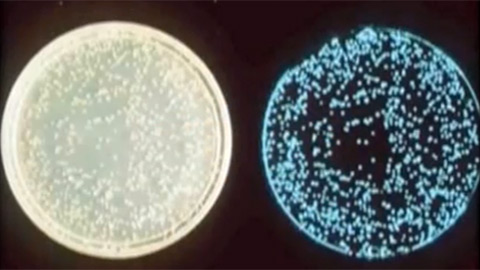 A group of researchers is in the process of developing a highly sensitive biosensor designed to detect toxic substances using bioluminescent inhibitory analysis as well as to monitor a biomarker for indicating stress and cancer, namely heat shock proteins 90 (Hsp90). The work is carried out at the School of Fundamental Biology and Biotechnology, Siberian Federal University, Krasnoyarsk, under the supervision of Dr. Rajeev Ranjan (India), postdoctoral researcher and senior researcher at the laboratory of bioluminescent biotechnology, and Dr. Valentina Kratasyuk, chair of biophysics (School of Fundamental Biology and Biotechnology SibFU) and leading researcher at the laboratory of bioluminescent biotechnology.
A group of researchers is in the process of developing a highly sensitive biosensor designed to detect toxic substances using bioluminescent inhibitory analysis as well as to monitor a biomarker for indicating stress and cancer, namely heat shock proteins 90 (Hsp90). The work is carried out at the School of Fundamental Biology and Biotechnology, Siberian Federal University, Krasnoyarsk, under the supervision of Dr. Rajeev Ranjan (India), postdoctoral researcher and senior researcher at the laboratory of bioluminescent biotechnology, and Dr. Valentina Kratasyuk, chair of biophysics (School of Fundamental Biology and Biotechnology SibFU) and leading researcher at the laboratory of bioluminescent biotechnology.
“We study universal mechanisms of interaction between nanomaterials and biological objects of different levels of organization necessary for the development of biosensors in which the enhancement of the bioluminescent signal, and hence the sensitivity of the analysis, is achieved by integrating nanoparticles with bioluminescent probes, namely adenosine triphosphate (ATP) and flavin mononucleotide (FMN). ATP and FMN are the key substrates of luciferase of fireflies and luminous bacteria. We have chosen these biological objects not accidentally since both bioluminescent systems are widely used in the development of bioluminescent biosensors, which allow obtaining a prompt and reliable analysis of the level of various substances. We have chosen gold nanoparticles (AuNP) to enhance bioluminescence and observed that signal amplification occurred during binding, for example, for ATP with AuNP up to 150 %,”— said Dr. Rajeev Ranjan.
The enhanced luminescence properties of AuNP can be used to monitor the Hsp90 protein, an elevated level of which is traditionally considered to be a biomarker for indicating stress and cancer.
“We developed a biological module to monitor the stress-induced protein on the basis of gold nanoparticles associated with adenosine triphosphate molecules. This type of protein has increased stability. When carrying out a luminescent reaction using the obtained biological module in the presence of Hsp90, a refolding (restoration of the structure) of luciferase occurs under certain temperature conditions, and the kinetics of the luminescent reaction changes, which allows measuring the amount of Hsp90, and thus detecting stress or diagnosing oncology diseases. We have confirmed that the developed biological module of the biosensor can be used, among other things, for the detection of heavy metals, as well as the control of stress overload in athletes. The researches in this direction are in progress. In the future, we plan to use the resulting nanoparticles for increasing the sensitivity of bioluminescent analysis methods,”— clarifies Dr. Kratasyuk.
The project is supported by a grant from the Russian Foundation for Basic Research.
6 February 2019
SibFU Scientists Discover the Most Health-beneficial Fish in the World
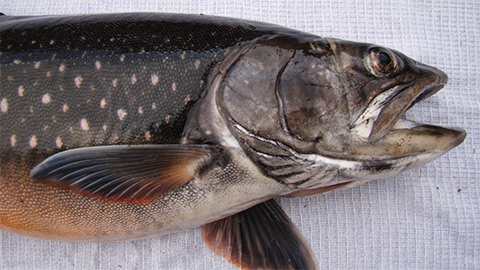 SibFU researchers together with their colleagues from Institute of Biophysics of the Siberian Branch of the Russian Academy of Sciences proved that boganida char (Salvelinus boganidae), which is endemic to the lakes of Khatanga rvier basin and the lakes of Norilka-Pyasino system, has a record level of Omega-3 polyunsaturated fatty acids among all known wild fish species.
SibFU researchers together with their colleagues from Institute of Biophysics of the Siberian Branch of the Russian Academy of Sciences proved that boganida char (Salvelinus boganidae), which is endemic to the lakes of Khatanga rvier basin and the lakes of Norilka-Pyasino system, has a record level of Omega-3 polyunsaturated fatty acids among all known wild fish species.
"Fish and seafood are the human main sources of polyunsaturated fatty acids of Omega-3 family: eicosapentaenoic (EPA) and docosahexaenoic (DHA) acids known as cardiоvascular disease protectors. The World Health Organization recommends taking at least one gram of these bioactive substances per day to lower the risk of circulation organs disease development. Omega-3 improves brain activity, normalizes memory and enhances learning ability as well"reveals the Head of SibFU Department of Aquatic and Terrestrial Ecosystems Mikhail Gladyshev.
The scientists considered sea-fish to have record levels of Omega-3 for more than 20 years. As an example, sardine muscle tissue contains up to 26 total milligrams of EPA and DHA per 1 gram of biomass. This is not the limit as it turned out.
"In our latest researches comparing migratory and non-migratory populations of some fish species (Kamchatka sockeye salmon in particular) we didn't find any substantial factors that would allow sea-fish to be more health-beneficial than freshwater species. We focused on the biome of the lakes of Arctic Siberia (Lake Sobachye in particular) and discovered that the level of Omega-3 acids in boganida char goes up as high as a record 33 milligrams per gram making this fish species an all around champion in health benefits"scientist noted.
Boganida char's high biochemical value proven by Krasnoyarsk scientists is expected to feature as an extra factor for environment-preserving activities concerning Taymyr peninsula lakes as well as feature heavily in the development of Krasnoyarsk krai fisheries.
The level of Omega-3 foods consumption by Krasnoyarsk locals is relatively low while cardiovascular problems are in the first place among socially significant diseases in Russia. These problems are the cause of 48.7% deaths.
"We hope that our research will change the dietary habits of the urban community for the better. It is sufficient to take 30 grams of this fish, which lives in the North of Krasnoyarsk krai, to cover the daily need of these useful fatty acids"says Mikhail Gladyshev.
The researches determining fish nutritive value are conducted as a part of Russian Science Foundation "Detection of genetic and ecological factors that determine concentration of polyunsaturated fatty acids — cardiovascular disease protectors in wild fish" project.
31 January 2019
SibFU Scientists Automated Electrolyte Composition Analysis for Aluminium Production
 A team from Siberian Federal University suggested a new method for automatic composition analysis of electrolyte samples from electrolysis baths. It will provide for more accurate technological control and increase the efficiency of aluminium production. The article of the scientists was published in the Crystals journal.
A team from Siberian Federal University suggested a new method for automatic composition analysis of electrolyte samples from electrolysis baths. It will provide for more accurate technological control and increase the efficiency of aluminium production. The article of the scientists was published in the Crystals journal.
Metal aluminium is obtained in the course of electrolysis — passing of current through an alumina-cryolite melt at around 950°С. The main component of a melt is cryolite (a salt containing sodium, aluminium, and fluorine atoms) to which aluminium oxide (alumina) is added. To improve the technological properties of the electrolyte, aluminium fluoride, calcium fluoride, and sometimes magnesium and potassium fluoride can be added to it. In the course of electrolysis the composition of the substance in the baths constantly changes, and the ratio of components shifts as well. Preservation of optimal bath composition is a key element of electrolysis technology.
To maintain the optimal composition, one has to constantly take and analyze electrolyte samples. Such analysis should be as accurate as possible and take little time. An express control method used in the industry is called X-ray diffraction quantitative phase analysis. It is based on studying X-ray images formed by the X-rays reflected from samples. In its traditional variant, such analysis has one considerable disadvantage: it requires regular calibration using control materials with accurately determined phase compositions, and it also fails to take the actual crystal structure of the phases into account. An alternative option is called the Rietveld method. It provides for quantitative analysis on the basis of specifying the atomic and crystal structure of component phases without using control samples. However, this method is interactive and difficult to automate, as one has to manually set up to one hundred of initial system parameters and to manage the order of their programmed adjustment.
A team from SFU modernized the Rietveld method to make it applicable for automated analysis. To do so, they developed a self-configuring evolutionary genetic algorithm — a program that uses the principle of biological natural selection to find optimal parameter values when modelling an X-ray image. First, a genetic algorithm uses random values, but then it optimizes the vast range of X-ray image and phase crystal structure parameters and manages the adjustment of only the best of them using the Rietveld method. Therefore, the algorithm is able to work without human involvement and self-learn.
“Generally, our results meet the technological criteria for the accuracy of electrolyte analysis that are used at aluminium production facilities. We can recommend our genetic algorithm to express control of electrolyte composition. The analysis shows a minor system error caused by over-estimation of cryolite concentration due to its uneven crystallization in the course of sampling. Before this method is implemented by the industry, we have to eliminate this error and also to improve the efficiency of the method,”says Igor Yakimov, the head of the project, PhD in physics and mathematics, and professor of the Institute of Non-Ferrous Metals and Material Studies of SibFU.
The study was carried out together with scientists from Siberian State Aerospace University.
Fig. Correlation between the calculated and certified values of cryolite concentration for control materials. CR — certified values of control samples; SGA CR — calculated values, SD — standard deviation
23 January 2019
The digital map will make the prediction of air pollution level possible
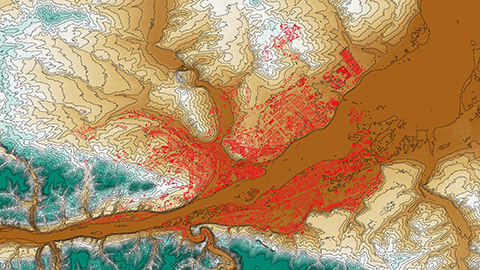 SibFU scientists have developed a digital terrain model of the city of Krasnoyarsk and its larger metropolitan area. It can predict the spread of emergency situations of anthropogenic origin and natural disasters. The model will make it possible for experts to assess the potential of the air basin over Krasnoyarsk (the volume of the atmosphere, which determines the conditions for the distribution of pollutants under various meteorological conditions).
SibFU scientists have developed a digital terrain model of the city of Krasnoyarsk and its larger metropolitan area. It can predict the spread of emergency situations of anthropogenic origin and natural disasters. The model will make it possible for experts to assess the potential of the air basin over Krasnoyarsk (the volume of the atmosphere, which determines the conditions for the distribution of pollutants under various meteorological conditions).
IT experts took part in creating a map as well as ecologists. High precision of the map was achieved by using the remote sensing of the Earth surface technology.
According to associate professor of the Department of Geoinformation systems, research deputy director of School of Space and Information Technology Prof. Alexey Romanov high-precision digital terrain models are becoming more and more widespread around the world.
"Satellite data guarantees an extremely high-precision of surface objects display. Speaking of the urban environment: examining the atmospheric dispersion of the pollutants, making the reliable model calculations of the atmospheric phenomena, assessing the damage caused by emergencies (in particular those related to toxic or radioactive substances) is impossible without a high-precision terrain model. In the future, we plan to keep working on improving precision. But the version we already have allows taking into account the effect the small structures produce on air mass movement".
Building a terrain model is essential for solving the model of the spread of pollutants in the atmosphere. Due to this in order to enhance the precision, the creators used different digital terrain models, open source ones that have an appropriate spatial resolution for “exploratory modelling” as well as business solutions that have an insignificant level of error in relative terrain elevation.
Experts are convinced that the map is going to be useful for predicting and preventing natural disasters that are dangerous for residents and urban infrastructure such as floods, landslides and smogging.
10 October 2018
SibFU scientists are going to create the first digital audio library of the Evenki language
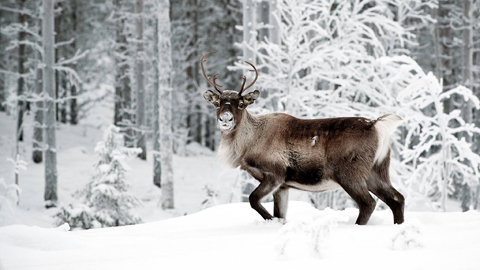 Scientists studying culturology at SibFU School of the Humanities conducted linguistic field research at the villages of Evenkiyskiy Municipal District of Krasnoyarsk Territory working for "Revival of the Evenki Language" project. The research is funded by the grant of PJSC East Siberian Oil and Gas Company, a subsidiary of PJSC Rosneft Oil Company.
Scientists studying culturology at SibFU School of the Humanities conducted linguistic field research at the villages of Evenkiyskiy Municipal District of Krasnoyarsk Territory working for "Revival of the Evenki Language" project. The research is funded by the grant of PJSC East Siberian Oil and Gas Company, a subsidiary of PJSC Rosneft Oil Company.
"Such research is of great significance for indigenous small-numbered peoples of Evenkiyskiy Municipal District and has never been conducted at the District before,"says Professor Natalia Koptseva, Head of the Department of Culture Studies at SibFU School of Humanities.
Statistics show that the percentage of the Evenki people speaking their native language is on the steady decline. In 1997 about 30% of the Evenki were fluent in their native language and that number decreased to just 15% in 2017. Scientists make a point that it happens because Evenki people do not use their native language in their families anymore. This is mostly due to the trend of less Evenki people having reindeer herding as their occupation and less and less of them living a nomadic life in taiga because many elements of their native language are related to the traditional trades.
"During the field work, we recorded folklore of the Evenki people, interviewed experts involved in the Evenki cultural heritage issues in the Tura and Baikit settlements of the Evenkiyskiy Municipal District. We are digitizing the collected media (photo, audio and video) now. All of that will be included into a collective monograph "New projects for the revival of the Evenki language,"said Natalia Koptseva.
The results of the field research will be used to develop up-to-date methods and effective technologies for the revival of the Evenki language, and to create the environment that will help young Evenkis develop a positive attitude towards their ethnocultural identity. The first audio library of the Evenki language will be an important part of this process.
Project results will be publicly discussed and overviewed by experts at Siberian Federal University in the fall of 2018.
PJSC East Siberian Oil and Gas Company noted that the support of culture and traditional way of life of disingenuous peoples of Evenkia is one of the significant parts of the social policy of the company. The company has social, charity and grant programs to implement it. SibFU scientists are working on two more projects supported by East Siberian Oil and Gas Company at the moment-
The research was funded by the "East-Siberian Oil and Gas Company", which provides financial support in two other Evenki-related projects implemented at Siberian Federal University: "The Evenki Reindeer" and "The Red Book of Evenkia".
25 September 2018
SibFU scientists optimized locating of oil and gas deposits
 Scientists of Siberian Federal University have suggested a new method that allows improving efficiency of locating and exploring hydrocarbons deposits. RIA Science portal first published the information about the research.
Scientists of Siberian Federal University have suggested a new method that allows improving efficiency of locating and exploring hydrocarbons deposits. RIA Science portal first published the information about the research.
According to experts, locating and exploring hydrocarbons nowadays face a number of obstacles, for example heterogeneous upper sections of oil-and-gas wells or low-yield deposits.
To counter this, scientists are actively developing comprehensive geophysical methods and technologies based on illuminating deposits with seismic radiation and detecting noise seismic emissions after an artificial disturbance.
"We have suggested a passive seismic-electric method that makes it possible to register the mutual-correlation function of seismic and electric noises,"says Danil Kudinov, an assistant professor at the University's School of Military Engeneering.
Scientists conducted experimental works using this method, and measured the mutual-correlation function at hydrocarbon deposits in Khakasia. A two-channel geophysical device, developed at the University, has made it possible to record seismic and electric noises in the range of 0.1–20 hertz band.
"In both cases, high-yield deposits, located 1,800-2,000 meters beneath the surface, were marked by maximum mutual-correlation function levels that exceeded natural levels by five to seven times. This indicates a seismic-electric effect taking place,"Kudinov noted.
According to Kudinov, maximum mutual-correlation function levels are detected when seismic and electric noises coincide in both their time and phase. This is the reason why their simultaneous detection expands the range of signs used to identify hydrocarbon deposits.
This has brought hope that locating such deposits using direct search methods will become more effective, the researchers said. In order to implement the passive seismic-electric method still further conducting lots of fieldwork in various geological-geophysical conditions is a must.
The research published in the Russian Geology and Geophysics journal was sponsored by the Russian Foundation for Basic Research, the Government of the Krasnoyarsk Krai and the Krasnoyarsk Regional Fund of Science and Technology Support.
6 September 2018
SibFU ecologists studied dust composition in Krasnoyarsk
 The School of Ecology and Geography SibFU investigated chemical composition of fine dust in the atmosphere of Krasnoyarsk. The report was presented on 27 July 2018 at the meeting of environmental headquarter chaired by Alexander Uss, the Acting Governor of the Krasnoyarsk Territory and the President of SibFU.
The School of Ecology and Geography SibFU investigated chemical composition of fine dust in the atmosphere of Krasnoyarsk. The report was presented on 27 July 2018 at the meeting of environmental headquarter chaired by Alexander Uss, the Acting Governor of the Krasnoyarsk Territory and the President of SibFU.
According to Ruslan Sharafutdinov, a director of the School of Ecology and Geography SibFU, the problem had never been studied before, although the composition of particles in the atmosphere was considered significant. They studied the chemical composition of the particles from 2.5 to 200 microns jointly with researchers from the Laboratory of Electronic Structural Research, Center for Collective Use SibFU. In addition, they studied the mineralogical and granulometric composition of the soils that are common for Krasnoyarsk.
“As a result of analysis, we found out that mineral particles such as quartz and aluminosilicate dominate among particles lager than 5 microns. Their source are loose sediments that are common for the city. Almost all soils in the city are potentially ‘ready for dusting’ and enter the atmosphere under adverse conditions with the influence of technology or wind. Construction works, traffic and poor-quality street are the reason for small particles being in the air. However, a large proportion of dust particles contains carbon, sulfur, chlorine, nitrogen compounds, which may indicate their technogenic origin. It will be very interesting to study the composition of fine particles in winter, especially during adverse meteorological conditions,”highlighted Ruslan.
According to the author of the report, no dust is favourable for human health. Furthermore, fine dust is a particular danger to humans. The problem of high dustiness in the atmosphere of the city can be solved Regular wet cleaning of streets during the dry season, removal of polluted snow from the streets in spring, dense planting along the roads, and the active implementation of dust suppression measures during construction can help solve the problem of high dustiness in the city’s atmosphere.
We can add that during the meeting of environmental headquarters they discussed plans for the acquisition of new equipment for efficient street cleaning, methods for minimizing the harm caused by vehicle emissions, as well as traffic optimization.
1 August 2018
Scientists of SibFU increased sensitivity of biosensor for analysis of water toxicity
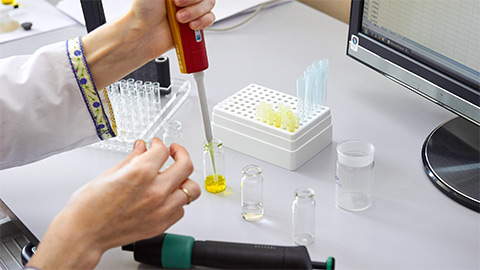 Scientists of Siberian Federal University were able to increase the sensitivity of a biosensor, which is capable of analyzing water and food products for toxicity using gold nanoparticles says TASS.
Scientists of Siberian Federal University were able to increase the sensitivity of a biosensor, which is capable of analyzing water and food products for toxicity using gold nanoparticles says TASS.
The main component of the biosensor, SibFU scientists work with, is a biomodule, which is an enzyme of luminous organisms. Under favorable conditions enzymes emit light, which are indicated by a special device — luminometer. However, this glow is reduced in the presence of toxic substances. According to the intensity of light emitted, scientists can assess the quality or safety of a product.
"But each system has its own limit: for example, it is impossible to determine very low concentrations of toxicants in the sample. Therefore, the idea of increasing the sensitivity of such a test with the help of gold nanoparticles was put forward. The light emitted during the enzymatic reaction meets nanoparticles and is reflected from them, but increased in dozens of times. This phenomenon was called "the increase of bioluminescence by metals,"said one of the authors of the study, a junior researcher at the laboratory of bioluminescent biotechnology at the University, Maria Kirillova.
In the experiments that were conducted in the laboratories of SibFU, scientists faced the problem of instability of gold nanoparticles, their coagulation, meaning adhesion. The lead author of the study, a member of the bioluminescent biotechnology laboratory Rajev Ranjan suggested covering the gold nanoparticles with a lipid mixture as a stabilizer. As a result, the proposed method worked.
"At present, the phenomenon of amplification of a light signal with the help of metal nanoparticles is actively studied all over the world, but more often the increase in fluorescence is investigated. There are not many works on the application of this method to enhance the luminescence of bioluminescent enzymes "said Maria Kirillova.
The scientists plan to apply the results to make a highly sensitive biosensor that will allow analysis of the toxicity of water and products purchased in supermarkets.
The paper is published in Journal of Nanoparticle Research. Along with Rajev Ranjan and Maria Kirillova, the team includes representatives of SibFU and the Institute of Biophysics and the Institute of Physics of the KSC of the SB RAS: Elena Esimbekova, Sergey Zharkov and Valentina Kratasyuk.
The work was carried out on the project "Development of scientific foundations for a new express biotechnology of biotesting for food safety and quality control of vegetables and fruits", supported by grants No. 16-44-242126 of the RFBR, KSAU "Krasnoyarsk Regional Fund for Support of Scientific and Technical Activity" and the Government of the Krasnoyarsk Territory , and also in part by grant No. 16-14-10115 of the RNF "New methodology of complex express assessment of soil quality and contamination based on enzymatic bioluminescent systems".
10 July 2018
Scientists of SibFU proposed to use Siberian plants for treatment of serious diseases
 Scientists of Siberian Federal University found possible sources of medicinal and antimicrobial drugs. The results of the study of unique medicinal properties of the microorganisms living within the plant — endosymbionts, are published in the scientific journal Frontiers of Biology. The news of the discovery was published by the scientific portal TASS.
Scientists of Siberian Federal University found possible sources of medicinal and antimicrobial drugs. The results of the study of unique medicinal properties of the microorganisms living within the plant — endosymbionts, are published in the scientific journal Frontiers of Biology. The news of the discovery was published by the scientific portal TASS.
According to Svetlana Prudnikova, a professor of the basic biotechnology department of SibFU, one of the authors of the research, these properties can be used to create new drugs for treatment of serious diseases.
"Plants are closely related to microorganisms — this influence is mutual. Microorganisms play a big role in the life of plants, and plants in turn have an effect on microbes. As a result, not only the plants themselves have medicinal properties, but the microorganisms that inhabit them too. The substances released by them can be used as sources of antimicrobial agents for the treatment, for example, of resistant strains of diseases,"— she said.
According to Svetlana, the peculiarities of the interaction of Siberian plants and microorganisms inhabiting them have not been studied scientifically. At the same time, such studies are actively carried out, for example, in such countries as India and China, traditionally famous for their medicinal herbs.
Scientists from SibFU became the first to study Siberian plants, which are actively used to treat various diseases. Specialists of SibFU collected samples of plants to study the properties of microorganisms inhabiting them in the green zone near the city of Krasnoyarsk.
"Endosymbionts are typical microorganisms, many have the same species, genera, the same representatives of the genus Bacillus. For example, we found that the foalfoot has a number of new species of bacilli that were recently identified by other scientists. They show good antimicrobial properties,"— Svetlana Prudnikova said, adding that in the future these microorganisms can be used in the production of drugs for the treatment of infectious diseases.
In addition to medicine, according to the representative of SibFU, the study of endosymbionts is important for the development of agriculture. For example, if you understand the mechanism of production of active substances by symbionts, in the future it can lead to the development of drugs to stimulate the growth of plants or to protect them from various diseases.
The SibFU Professor Tatyana Volova and the postdoc of SibFU Sayed Baker (India) are the authors of the publication too.
26 June 2018
SibFU Scientists Came Up with Innovative Way to Prepare Nuclear Waste for Disposal
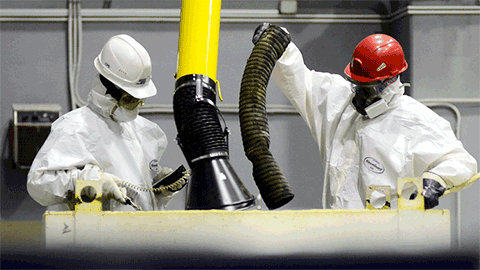 The innovative technology of preparation for the safe storage of radioactive waste (RW) obtained from the processing of spent irradiated nuclear fuel (SNF), was developed by scientists of Siberian Federal University.
The innovative technology of preparation for the safe storage of radioactive waste (RW) obtained from the processing of spent irradiated nuclear fuel (SNF), was developed by scientists of Siberian Federal University.
Today, the safest way to handle radioactive wastes is a burial of them for a long time after a special treatment and conditioning process. One of the problems of this process is the presence of sparingly soluble sediments in the pulp — waste in the liquid state, which must be recovered from the waste storage prior to the disposal.
As explained by one of the authors of the study, Professor of SibFU, Doctor of Technical Sciences Vladimir Kulagin, with the collapse of cavitation microbubbles in the process of cavitation treatment of sparingly soluble substances in water, due to a change in its physicochemical properties (activation) and other effects, for example, the formation of high-pressure fields, temperatures and impacts, even such strong minerals as diamond are destroyed.
The method, developed by scientists of SibFU, allows destroying dense, water-insoluble formations, which is deposited on the bottom of a reservoir with SNF, with the erosion of sediments with acid solutions based on cavitation-activated water.
"Our method provides an increase in the velocity of dissolution and the volume of recovered deposits by about 1.5 times in comparison with the traditional method. And when mixed in a cement matrix cavitation treatment of water in the production of cement compound with the inclusion of waste of radiochemical production, it leads to an increase in the strength of the cement stone by 2–3 times in comparison with the preparation of the solution in a usual way,"said Vladimir Kulagin.
According to him, studies with real and model pulp were conducted in the laboratories of the Mining Chemical Combine in Rosatom in Zheleznogorsk (Krasnoyarsk Territory), and experiments on cavitation treatment of water in the laboratory of Siberian Federal University.
"Preliminary results on the decontamination of radioactively contaminated equipment have already been obtained and they confirm that cavitation technology in this area of handling particularly hazardous wastes is perspective, for example, when decommissioning nuclear facilities. There is also a preliminary agreement to continue these works and expand the range of tasks using cavitation,"concluded Mr. Kulagin.
The scientists of SibFU published the paper about their work in the journal "Chemical and Oil and Gas Engineering", which was published in the USA in the journal Chemical and Petroleum Engineering, a translation version of the Russian journal.
Scientists of SibFU got the first batch of eco-friendly pitch
The team of scientists obtained the first batch of alternative binder for self-baking anodes in the production of aluminum — ecological pitch. Works on developing technology for obtaining a unique product are conducted in the School of Petroleum and Natural Gas Engineering in cooperation with the Engineering and Technology Center of RUSAL and with the support of scientists from the Institute of Chemistry and Chemical Technology of the SB RAS.
At the moment, the construction of a pilot line for the production of environmentally friendly pitch is being completed, and the pitch will be tested in industrial production later.
Scientists note that this year's work allowed improving the technological parameters of the pitch while maintaining the main advantages of this material — reduced content of carcinogenic components and high yield of the production in comparison with the traditional binder.
According to the project manager Fedor Buriukin, Director of the School of Petroleum and Natural Gas Engineering, in the long run the use of environmentally friendly pitch at metallurgical enterprises will reduce the emission of polluting components into the air of the working area and residential areas:
«Russian industry faces the task of increasing the volume of coal processing into non-fuel products. This technology is focused specifically on the deep processing of solid fossil fuels in highly demanded products on the market. The comprehensive support of the United Company RUSAL over the past few years pushed the development on a new level. The plans are to increase the production to the volume of pitch consumption required in the production of anode mass for aluminum plants of RUSAL».
SibFU researchers found the way to predict the toxicity of nanomaterials
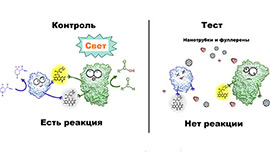 A team of researchers from Siberian Federal University and Krasnoyarsk Scientific Centre of the Siberian Branch has developed an assay to predict the potential toxicity of carbon nanomaterials. The details are presented by the official website of the Russian Science Foundation.
A team of researchers from Siberian Federal University and Krasnoyarsk Scientific Centre of the Siberian Branch has developed an assay to predict the potential toxicity of carbon nanomaterials. The details are presented by the official website of the Russian Science Foundation.
Simplicity, fast reaction speed, and high sensitivity are the important features of the assay. Results were published in the journal Toxicology in Vitro.
The team of researchers proposed using the bioluminescent reagent Enzymolum to test the toxicity of nanomaterials. Enzymolum is a unique enzyme system of several molecules isolated from marine luminous bacteria. Luminescence intensity of reagent changes under various factors. Researchers have tested the ability of carbon nanotubes and fullerenes to suppress luminescence of enzyme system, and maximum inhibitory effect has been observed for multi-walled nanotubes. It's noteworthy that the test has been performed at concentrations of nanomaterials exceeding those expected in the environment. However, the more people use nanomaterials, the higher concentrations are in nature.
According to Elena Esimbekova, associate professor at the Department of Biophysics, School of Fundamental Biology and Biotechnology, research fellow at the Institute of Biophysics, Federal Research Centre ‘Krasnoyarsk Science Centre SB RAS’, development of nanotechnologies has led to widespread use of engineering nanomaterials. Nowadays, artificially created nanoparticles primarily on the basis of carbon are actively used in manufacturing pharma drugs, cosmetic products and in food industry.
«We have been developing Enzymolum assay systems for the last ten years. At present, it is an easy and simple to use technology. Reagent consists of small dried discs with enzymes. Each disc is designed to carry out one assay. Discs can be stored for a long time without property loss. The assay takes 2–3 minutes. Then you have a result, whether the solution of the studying sample affects the fluorescence or not. Since you have the results, you can make a conclusion about potential toxicity. The assay system has already been tested for the ability to rapidly detect the presents of toxicants, such as heavy metals or pesticides, in the environment. We can predict that rapid molecular bioassay Enzymolum will be widely applied in various spheres».
The research was conducted with the support of the Russian Science Foundation within the project «New methodology of rapid complex assessment of soil quality and pollution based on enzymatic bioluminescent systems».
Expedition of SibFU researchers to estimate carbon-absorbing ability of Siberian forests
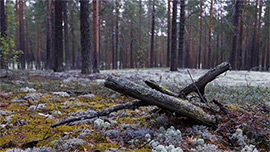 Researchers of Siberian Federal University have completed another expedition on studying fire regimes in ecosystems of middle taiga sub-region of Central Siberia. The conducted field research allows verifying the data of satellite monitoring of the forest, studying the stages of post-fire successions, and estimating carbon stocks in forest ecosystems.
Researchers of Siberian Federal University have completed another expedition on studying fire regimes in ecosystems of middle taiga sub-region of Central Siberia. The conducted field research allows verifying the data of satellite monitoring of the forest, studying the stages of post-fire successions, and estimating carbon stocks in forest ecosystems.
The expedition consisted of 8 research fellows from SibFU, among which were pyrologists, geographers, dendrochronologists, forest scientists and other experts. The group covered about 120 kilometres in 10 days. They conducted route surveys with access to trial sites (fire-prone areas in the past) located in floodplain of the Kutukas River of Yenisei District, Krasnoyarsk Territory. The group carried out works on 12 trial sites selected in advance with space images studying. During the expedition, more than 500 trees were assessed by 15 taxation parameters, including diameter, height, age, and species composition.
The data obtained prior to desktop studies shows significant threat from large-scale fires in the territory, especially against climatic changes and irruption of Siberian silkworm and bark beetles P. proximus. In addition, it makes a significant contribution to verification of space images and specifies that «disturbances are not always what they seem». For example, territories with a disturbance and a healthy forest with lichen cover look almost similar from space.
It's noteworthy that the expedition was performed within international and Russian studies of Central Siberia that have been conducted since 2005. This year, the team brought about 10 kilograms of core, needles and other samples from field study. The next stage of the research is laboratory processing of samples. The results of laboratory studies will be included in ZOTTO unified database. Analysis of this data array will allow determining dynamics of carbon in ecosystems, predicting probability of fire and its consequences in various territories, tracking climate changes and adjusting forest management strategies.
SibFU researches suggested using luminous proteins for toxicity analysis
The researches from Siberian Federal University jointly with the colleagues from Institute of Biophysics, Siberian Branch of the Russian Academy of Sciences (SB RAS), studied the effect of toxins on fluorescent proteins. Due to the results of their research a new type of pharmaceutical drug may be developed. Russian News Agency TASS described the details of the research.
The researchers studied fluorescent proteins that can be found in marine organisms, such as jellyfish Aequorea and Phialidium (Clytia) or hydroid polyp Obelia longissima. Proteins from these organisms contain coelenterazine (an organic compound that is oxidized to coelenteramide — a substance that fluoresces under the excided light).
«Using fluorescent coelenteramide-containing proteins transfers the toxicity understanding to the level of elementary physical and chemical processes. Perhaps this will lead us to development of new type of medicine and rethinking of the effects of the existing drugs», — said Professor Nadezhda Kudryasheva, co-researcher, Doctor of Science (in Physics and Mathematics), Chair of Physical and Inorganic Chemistry, School of Non-Ferrous Metals and Materials Science, SibFU.
Coelenteramide was exposed by temperature, poisonous substances (i. e. spirit), beta and gamma radiation. Researchers found that under the influence of all these factors the fluorescent protein changes light from blue-green to violet. According to them, toxicity of the medium can be assessed by «changes in contribution of violet and blue-green fluorescence»: the more the protein glows violet, the stronger the toxicity.
SibFU Researches synthesized gold nanoparticles with antibacterial properties from mimosa
 The researches from Siberian Federal University jointly with the researches from India and Mexico have synthesized gold-containing nanoparticles with the help of bacteria dwelling in Mimosa pudica. The obtained compounds have pronounced bactericidal properties, and that would help to develop new pharmaceutical drugs against antibiotic-resistant bacteria. Russian News Agency TASS described the details of the research.
The researches from Siberian Federal University jointly with the researches from India and Mexico have synthesized gold-containing nanoparticles with the help of bacteria dwelling in Mimosa pudica. The obtained compounds have pronounced bactericidal properties, and that would help to develop new pharmaceutical drugs against antibiotic-resistant bacteria. Russian News Agency TASS described the details of the research.
Nowadays antibiotics are widely spread all around the world, and more and more drug-resistant microorganisms appear in the world. So now people are in search of new ways to control bacteria. Research shows that metallic nanoparticles possess strong antibacterial properties, especially those containing silver and gold. Unfortunately, chemical synthesis of such compounds is not only very expensive, but also unsafe, due to the use of toxic elements dangerous to human health and ecology.
According to the article published in the Environmental Toxicology and Pharmacology journal, «This research offers quick and environmentally friendly synthesis of gold-containing nanoparticles using new symbiotic bacterium Aneurin Bacillus migulanus 14 from Mimosa pudica. <…> Significant decrease in the activity of the pathogen Pseudomonas aeruginosa demonstrates the effectiveness of the new substance controlling pathogens». During the research the synthesis using bacterium Aneurin Bacillus migulanus 14 was improved, and now the process takes only 20 minutes. At the same time, neither high temperatures, nor expensive equipment, nor toxic reagents are required for the process.
The researchers checked antimicrobial activity of new compounds on a number of pathogenic bacteria. It turned out that gold is good in controlling various infections. Nanoparticles were the best in controlling P. Aeruginosa, E. Coli, S. Aureus, B. Subtilis, and K. Pneumoniae.
According to the researches, their work can be useful for developing new drugs controlling antibiotic-resistant bacteria.
The know-how of the SibFU researchers will increase the life of spacecraft
 Siberian Federal University together with the company «Research and production center of Magnetic Hydrodynamics» has rolled out ultra-thin aluminum wire for use in the aerospace industry.
Siberian Federal University together with the company «Research and production center of Magnetic Hydrodynamics» has rolled out ultra-thin aluminum wire for use in the aerospace industry.
With the help of the development aluminum aircraft wires with high electrical conductivity can be manufactured, and these wires can withstand various temperature fluctuations during long-term operation.
According to Krasnoyarsk engineers, the innovation’s uniqueness resides in the application of high-frequency electromagnetic field while casting aluminum which can be in that way accomplished continuously. As a result, the manufactured wire possesses unique physical and mechanical properties and has no analogues in Russia.
The client for the ultra-thin wire developed by the Krasnoyarsk engineers was the Special Design Bureau of the Cable Industry, a Russian enterprise dealing with the development of products for the rocket, space, aerial, and naval fields.
The developed ultra-thin wire is an alternative for the existing on-board cabling system serving as «nervous system» for aircrafts, which weight is comparable to the weight of the whole aircraft. Furthermore, the traditional material for wires is copper, the specific weight of which is three times more that of aluminum. The electrical aluminum wire developed by Siberian researches has characteristics of paramount importance for aerospace engineering: low weight, high electrical conductivity, and thermal resistance that allow launching a full cycle of aluminum on-board cable systems production.
Currently the developers have modernized the laboratory installation and pilot complex that will allow organizing serial production from various aluminum alloys. We can add that technology and equipment was patented in Russia.
The project was supported by the Regional Science Fund within a competition for research and technical projects aimed at cooperation of institutions and organizations of scientific and educational complex of the Krasnoyarsk Territory by the request from industrial enterprises in 2016.
Russian scientists come up with superior hydrogen storage material
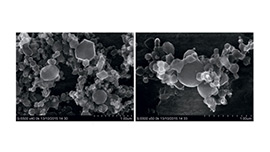 The researchers from SibFU and Institute of Physics of the Siberian Branch of the Russian Academy of Sciences received a new material for hydrogen storage. The material based on magnesium hydrogen can store hydrogen with a mass of 7 % of its weight. This is a record value of the storage for all similar materials.
The researchers from SibFU and Institute of Physics of the Siberian Branch of the Russian Academy of Sciences received a new material for hydrogen storage. The material based on magnesium hydrogen can store hydrogen with a mass of 7 % of its weight. This is a record value of the storage for all similar materials.
This development can be of use in building hydrogen fuel vehicles.
Hydrogen is one of the most promising options for replacing gasoline, gas and other fuels based on hydrocarbons, and nowadays, its use as a fuel for electric vehicles seems the most promising. However, hydrogen transportation presents severe difficulties. Firstly, it requires expensive and heavy cylinders, and secondly, it is not safe, since a mixture of air and hydrogen is highly explosive. Therefore, it is strongly recommended to store hydrogen in various accumulating materials during transportation.
According to theoretical estimations, magnesium can absorb hydrogen in amounts of up to 7.6 % of its own mass. However, in most modern experiments, the capacity of magnesium hydride does not exceed 5–6 weight percent. Krasnoyarsk researchers managed to boost this value by adding nickel and platinum to the magnesium hydride, they obtained a new material with advanced accumulation capability of 7 weight percepts of hydrogen.
The article of the researches has been published in the last issue of SibFU’s journal «Mathematics and Physics». In the authors teem there is a master’s degree student of the School of Engineering Physics and Radio Electronics — Ms. Eugenia Melnikova (currently she is an alumnus).
SibFU researchers suggested method for assessing effect of preservatives on organism
 Researches from Siberian Federal University and Institute of Biophysics have developed a new method for assessing the effect of nutrient additives on organism at the molecular level using enzymes. Russian News Agency TASS described the details of the research.
Researches from Siberian Federal University and Institute of Biophysics have developed a new method for assessing the effect of nutrient additives on organism at the molecular level using enzymes. Russian News Agency TASS described the details of the research.
In particular, the experts have already found out that sorbic acid used by food manufactures inhibits enzymes responsible for digesting proteins, if the concentration is less than 1 % of the acceptable level.
«We suggested a new approach in toxicology of nutrient additives, an assessment of the effect of preservatives on human organism, considering changes in the activity of biomarker enzymes. Nutrient additives are tested mainly on laboratory animals, but these tests do not allow seeing the effect of preservatives at the molecular level. Now we are developing a set of tests with key enzymes of various metabolic pathways responsible for metabolism of carbohydrate, ethanol, lactic fermentation, conduction of nerve impulses, and so on. With these tests we will be able to determine systems that are inhibited when preservatives are ingested». — Said Elena Esimbekova, associate professor of the Chair of Biophysics of SibFU, research fellow of the Institute of Biophysics.
Thus, the researchers has already found out that such common additives as sorbic acid (E-200), sodium benzoate (E-211), and potassium sorbate (E-202) decrease the activity of pancreatic enzymes that help digest proteins by 25–50 %.
As Elena Esimbekova noticed:
«According to Russian standards, concentration of these preservatives in food should not exceed 30 mg per liter. We determined that sorbic acid suppresses the enzymes responsible for protein digestion by 50 % at a concentration of only 2 mg per liter (TASS’s note: about 0.7 % from maximum acceptable level). Of all three additives sodium benzoate has the weakest influence on the enzymes».
The article is published in the International Journal of Food Chemistry.
SibFU researchers learned how to effectively monitor climate changes with the tree rings of Tibetan trees
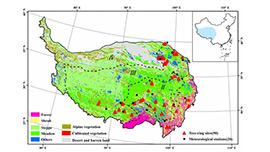 SibFU researches with the international colleagues have developed the effective method of assessing the impact of climate changes on the development of woody plants based on mathematical simulation. Russian News Agency TASS described the details of the research.
SibFU researches with the international colleagues have developed the effective method of assessing the impact of climate changes on the development of woody plants based on mathematical simulation. Russian News Agency TASS described the details of the research.
The researchers used data on annual tree rings of the Tibetan Plateau, the largest forest in the world, located at the altitude of 4000 meters above sea level. They brought together information from 20 different databases and received information about annual tree rings of 3000 trees growing in different parts of the forest area. They compared these numbers with satellite observations and temperature records for the period from 1960 to 2014 to understand the way the Tibetan trees reacted to changing of climatic factors.
«We developed innovative approach based on data on annual tree rings that helped us to calculate the start and the end of growing season of trees according to daily climatic data. <…> This approach can be applied to different forest regions», — as it is said in the article.
For example, it was found that in 1960–1981 the start and the end of growing period in spring calculated by the size of tree rings, remained almost unchanged. In 1982–2014, there was a decrease in average spring temperature by one degree, which, in turn slowed down the development of trees for 6–7 days.
With the help of collected data, the researchers developed a computer simulation technique that calculates the growth rate and the final width of the annual ring according to climatic date: the predicted model for the studied period coincided with the actual results of the study. According to the researchers, the new approach will allow to make not only realistic predictions of trees growth, but also to assess the impact of changing climatic factors on them, temperature and humidity at the first place.
The method lacks the main drawbacks of other existing methods for assessing the impact of climatic change on the growth of trees, which often given conflicting results and can be applied only to specific forest areas.
The article is published in the PNAS journal.
Improved model by the Russian dendrologists was tested on the trees of the Tibetan Plateau
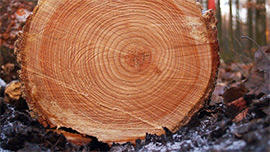 The model developed by the Krasnoyarsk scientists was used to study the Tibetan trees and discovered new aspects of climate impacting on annual ring forming.
The model developed by the Krasnoyarsk scientists was used to study the Tibetan trees and discovered new aspects of climate impacting on annual ring forming.
The simulation model of growth and tree-ring formation was proposed by the scientists Eugene Vaganov and Alexander Shashkin (Sukachev Institute of Forest, Krasnoyarsk) in the mid-1980s. To date, this model is considered one of the best in the world in the field of tree ecology. Researchers of the Siberian Federal University proposed a visual parameterization of the model, which greatly simplified the use of this model for the most diverse forest ecosystems of the planet. Chinese colleagues from the Northwest Institute of Environmental Studies and the Chinese Academy of Sciences addressed a proposal to the Krasnoyarsk scientists to analyze the formation of annual rings on the Tibetan plateau under the influence of climatic factors. The results of the research are published in the article «Simulation modeling of the formation of annual rings and its correlation with the climate on the Tibetan plateau" in the "Dendrochronology" Journal of the "Elsevier» publishing house in March 2017.
Vladimir Shishov, one of the authors of the paper, Doctor of Technical Sciences, Professor, Head of the Department of Mathematical Methods and Information Technologies of the Siberian Federal University, commented on the results of the research:
«During the analysis, the results of our modeling for verification were compared with direct four-year field observations of the growth of woody plants in the region. It showed similar results and made it possible to draw conclusions on the process of growth of woody plants for several decades on the basis of conventional modeling, avoiding lengthy field experiments.
In previous published works on the Tibetan Plateau, it was believed that the main driver of tree growth is the spring and summer temperatures. We have identified additional sustainable effects of the influence of moist soil regimes on the formation of annual rings, especially in the middle of the growth season, even in the cold sharp continental climate of the Tibetan plateau. Changes in this influence after 1985, caused by an increase in precipitation in the region due to the so-called global warming of the planet's climate are also shown».
Research in this area is highly relevant and of great practical importance because of the growing environmental problem in China. The team of scientists included representatives from China, Germany and Russia. The work was carried out as part of the project of the Russian Science Foundation (No. 14-14-00219).
SibFU project is the finalist of OIST 2017
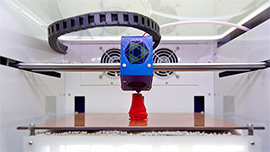 The project of the scientists team from the Siberian Federal University called «3D printing of bioengineering analogs of bone structures» became the finalist of the Open Innovation Startup tour 2017 (OIST) in «Biomedical Engineering». The elaboration was presented by the student Konstantin Kistersky, School of Fundamental Biology and Biotechnology.
The project of the scientists team from the Siberian Federal University called «3D printing of bioengineering analogs of bone structures» became the finalist of the Open Innovation Startup tour 2017 (OIST) in «Biomedical Engineering». The elaboration was presented by the student Konstantin Kistersky, School of Fundamental Biology and Biotechnology.
The defense was held at Tomsk State University on 13–14 February 2017 within the Skolkovo Foundation program, aimed at supporting fledgling entrepreneurs and innovators.
Due to getting into the final of large-scale competition, Konstantin was invited to Startup Village, the largest start-up conference for engineer entrepreneurs in Russia and the CIS countries. In addition, his project made it into the final of the START competition from the Fund for the Promotion of Innovation.
Volcano Samalas mystery revealed
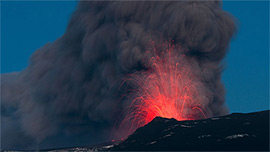 The international team of scientists with the participation of Krasnoyarsk dendrochronologists offered their answer to one of the mysteries of climatology and volcanology.
The international team of scientists with the participation of Krasnoyarsk dendrochronologists offered their answer to one of the mysteries of climatology and volcanology.
The reason for the scientific interest in the eruption of the volcano Samalas is that it is considered the largest in the last thousand years throwing as much as 10 cubic miles of rock into the atmosphere, which lead to destroying Pamatan, the capital of the ancient Kingdom of Lombok. The ice cores in Greenland evidence this as the study of their chemical composition in the 1980s pointed out that there was one of the largest in history volcanic eruptions in the XIII century. The volcano itself has long remained unknown, and scientists have searched for it all over the world. After studying the writings on the palm leaves in Old Javanese, in 2003 Franck Lavigne found that this volcano could be Samalas located on the island of Lombok in Indonesia. Lake SegaraAnak formed in the crater later and made it difficult to detect the volcano.
One of the existing scientific theories in climatology over the impact of the eruption Samalas volcano on global climatic conditions in the XIII century says that this event may be the cause of the abnormal cold weather (chronicles describe the following year as the «year without a summer»), widespread crop failure, famine, and social upheavals in Europe after 1257.
In January 2017 a paper under the title «Climate response to the Samalas volcanic eruption in 1257 revealed by proxy records» was published in the British scientific journal Nature geoscience with high impact factor among the nature journals (12.508 for 2 years). The international writing team includes scientists from Switzerland, Russia, France, Britain, the United States, China and Canada. Vladimir Myglan (School of the Humanities of Siberian Federal University) and Olga Churakova (Sidorova) (University of Bern, Institute of Geological Sciences, V.N. Sukachev Institute of Forest, SB RAS) are the Krasnoyarsk scientists who took part in the research. In the scientific world, the leading hypothesis is that the eruption of the volcano Samalas in 1257 was the cause of the Little Ice Age, and more than a hundred years of social crisis in Europe. Based on the analysis of reliable sources the paper refutes this hypothesis.
The international team of scientists bases their studies on the chronicles of European cities (Speyer, Worms and others) and Siberia, chronicles of harvests and climate data of the annual rings of trees. During the interdisciplinary analysis of data sources, it was found that the impact of the volcanic eruption Samalas on the European climate and the severe cooling after 1257 is greatly exaggerated as the heterogeneity of climate change occurs in the places of distribution of volcanic sediments.
Vladimir Myglan:
«Western Europe, Siberia and Japan experienced the strongest cooling, which coincided with warmer than normal conditions in Alaska and Northern Canada. It is assumed that in North America volcanic radiation was modeled on the positive vibrations of the warm phase of the El Niño. Historical data confirm a severe famine in England and Japan, but it had started before the eruption. We believe that the eruption of the volcano Samalas only aggravated an existing crisis but it was not the cause».
SibFU Takes Part in the Creation of the Declaration on the Arctic
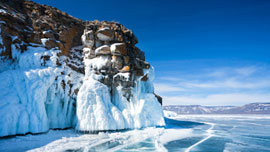 The director of the Institute of Ecology and Geography Ruslan Sharafutdinov took part in the first Congress of the University of the Arctic (UArctic) as a representative of Siberian Federal University and became one of the creators of the final declaration. The document proclaims a balance between effective development of territories, protection of nature and rights of indigenous peoples to be a key priority for all Arctic States.
The director of the Institute of Ecology and Geography Ruslan Sharafutdinov took part in the first Congress of the University of the Arctic (UArctic) as a representative of Siberian Federal University and became one of the creators of the final declaration. The document proclaims a balance between effective development of territories, protection of nature and rights of indigenous peoples to be a key priority for all Arctic States.
Ecology of Forest Fires Has Been Discussed at SibFU
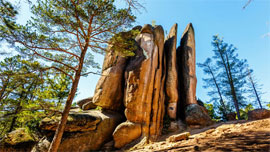 September 12, 2016 Siberian Federal University hosted the international scientific seminar “Ecology of Forest Fires”. The aim of the seminar was to discuss the problems of forest fires and their consequences for the Siberian region, as well as the development of practical recommendations for fire management and control of their distribution in the Central Siberia.
September 12, 2016 Siberian Federal University hosted the international scientific seminar “Ecology of Forest Fires”. The aim of the seminar was to discuss the problems of forest fires and their consequences for the Siberian region, as well as the development of practical recommendations for fire management and control of their distribution in the Central Siberia.
The importance of the topic was highlighted by the Head of Department of Geographic Information Systems of SibFU, Head of Laboratory of Forest Monitoring at Forest Institute named after V. N. Sukachev, professor, Doctor of Biology Vyacheslav Haruk:
“In the context of the climate change, which we are now witnessing, the problem of forest fires in the boreal zone attracts more and more attention. American and European colleagues predict that there will be more fires and they will cover larger areas. There will be more catastrophic fires, covering one million hectares. Such fires were observed in 2010 in the European part of Russia and in Siberia they happen more often. Objective observations from space, which clearly show the zones traversed by fire, confirm the trend of increasing area and frequency of forest fires”.
The event was attended by staff of the Forest Institute named after V. N. Sukachev and research scientists of School of Ecology and Geography of SibFU. Lectures and presentations were delivered by professors Beatriz Duguy Pedra and Ramon Vallejo Calzada (Spain) University of Barcelona and Professor, Director of the Regional Fire Monitoring Centre for Central Asia (Mongolia) Oyunsanaa Byambasuren.
One of the Developments of Research Scientists at SibFU Will Make Aluminum Production More Environmentally Friendly
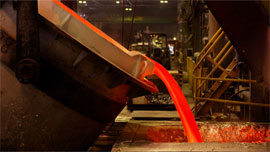 SibFU scientists together with colleagues from the Institute of Chemistry and Chemical Technology of the SB RAS and RUSAL conduct research to create a unique material — autoclave coal tar pitch produced by thermal dissolution of coal — processing of finely ground coal and an organic solvent at high temperature and pressure. It is intended to replace coal tar pitch, which is traditionally used in the production of electrodes.
SibFU scientists together with colleagues from the Institute of Chemistry and Chemical Technology of the SB RAS and RUSAL conduct research to create a unique material — autoclave coal tar pitch produced by thermal dissolution of coal — processing of finely ground coal and an organic solvent at high temperature and pressure. It is intended to replace coal tar pitch, which is traditionally used in the production of electrodes.
Research Scientists at SibFU Study Micro Anatomy of Tree Rings
 The research team project of Siberian Federal University “Digital microanatomy of growth rings in physiology, ecology, climatology and archeology” has won the grant of the Russian Scientific Foundation in the contest aimed at supporting projects and implementation of fundamental and exploratory research, results of which will be presented by scientists at international conferences.
The research team project of Siberian Federal University “Digital microanatomy of growth rings in physiology, ecology, climatology and archeology” has won the grant of the Russian Scientific Foundation in the contest aimed at supporting projects and implementation of fundamental and exploratory research, results of which will be presented by scientists at international conferences.
The team of research scientists who will work under the grant are consulted by the academician Eugene A. Vaganov.
“The project is based on the current achievements of the scientific school of dendrochronology. So, for the selected core material that has been collected over the past years by Vladimir Myglan during the expeditions to the upper border of the forest of the Altai and Sayan mountains, and Tuva. Now we collected a large amount of wood material and built the longest continental Asia chronology showing a serious connection to changes in summer temperatures.
The grant will assist us in making a step forward in the use of tree rings as an indicator of climate change,— Eugene said. —The second part of the work to be undertaken within the grant refers to cooperation with foreign counterparts, and presentation of the results at major international conferences, seminars or summer schools. The project team suggests that it could be implemented already in 2017 in Russia in the framework of a large-scale international meeting under the name of the TRACE, where all European experts on tree rings come”.
SibFU Expedition Film Premiere to be Shown on the National “Russia 1” TV
June 27, 2015. The TV channel “Russia 1” will be the first channel to screen the film “Essey: the People and the Savages”. The film is based on the results of the expedition of research staff of Siberian Federal University to Evenkia for the purpose of labeling reindeer collars with satellite transmitters. The chief cameraman of the film was the associate professor of SibFU Igor Savchenko, and the director — a well-known TV journalist of the State Television and Radio Company (STRC) “Krasnoyarsk” Sergei Gerasimov. The film was made with the support of “Rosneft” company.
Competitive Selection for Participation in the Expedition “Kyzyl-Kuragino”
Russian Geographical Society announces the start of the competitive selection of volunteers among young people, who would “uncover secrets of the Valley of the Kings” and participate in the fifth field season of archaeological and geographical expeditions “Kyzyl-Kuragino”.
The purpose of the expedition is to ensure the preservation of cultural heritage in the area of construction of the railway line that will link the capital of Tuva, Kyzyl, and the Elegestskoe metallurgic close-burning coal deposit with the Kuragino Territory transportation hub of the Krasnoyarsk Region.
This unique place has monuments of different eras – from the ancient sites of the Prehistoric Man up to the medieval fortifications, including unique multi-layered settlements of the Neolithic and Bronze Age, monuments of the Stone Age, dating back hundreds of thousands of years.
To help archaeologists to study and preserve this cultural heritage Russian Geographical Society gathers volunteers to participate in the expedition to the field camps “Ermak” (Krasnoyarsk region) and “Valley of the Kings” (Republic of Tuva).
To participate in the selection, it is necessary before March 1, 2015 to fill in the questionnaire on the site of the project.
The Arctic, Nansen and SibFU
The theme of the “Arctic”, its development and preservation is topical for SibFU scientists. So, back in 2010 SibFU hosted the international conference “Siberian North and the Arctic in the global challenges of the 21st century”. The conference was attended by nearly 200 scientists, government officials and representatives of the business community. The scientists discussed problems of the development of the Arctic in the global context, the resource potential of the Siberian North, transport infrastructure issues, international cooperation and the formation of an effective environment.
In addition, the university implemented a number of projects of economic, environmental and social orientation:
- works on the creation of space monitoring system to study the influence caused by the increased shipping activity on considerably melted ice;
- works on the use of the “GLONASS” technology for the needs of the Far North;
- development of non-explosive technologies of underwater drilling;
- works on the development of heavy-duty cold-resistant materials based onultrahigh molecular weight polyethylene, allowing to increase the working life of 3 to 11 times;
- the development of modern technologies of housing construction, for example, the creation of eco-houses, which are based on the principle of the use of energy through biological interior components;
- widely presented projects on creation of special transport systems for the development of the northern Russian fields;
- representatives of the scientific work of the school of climate research under the guidance of the academician Eugene A. Vaganov are widely known far abroad;
- SibFU Law School scientists conduct research on international legal aspects of the exploration of the Arctic and legal security of the formation of labor resources in the northern regions.
The geopolitical aspect of the Arctic exploration and problem areas in the Arctic section are in the focus of SibFU sociologists. It is worth mentioning that SibFU has the Research Center on Indigenous Peoples issues, which is engaged in research activities on indigenous peoples, the development of proposals for the state authorities of the region and municipalities to improve the quality of life of the northerners.
The Film “Native Swamp” by Scholars of SibFU Screened on a Regional TV Channel
September 21, 2013 The state television and radio channel “Krasnoyarsk” shows another documentary by scientists of SibFU called “Native Swamp” (Rodnoe Boloto) about the importance of preserving biological diversity and creation of sanctuaries “Tyukhtet-Shadatsky Wetland Complex” and “Saratov Swamp”, filmed in collaboration with a team of the regional channel.
According to the associate professor of SibFU Igor Savchenko, the film was the result of the summer expedition of ornithologists of the university to the southern and central territories of the region. It is noteworthy that “Native Swamp” is the fifth film made in association with SibFU biologists. Earlier the TV Channel “Krasnoyarsk” and the program “Unlost Paradise” (Nepoterianni Rai) already screened the films “Grouse Hunter” (Okhotnik za glukhariami), “Life by the Lake” (Zhizn u ozera), “Spring Arrives on the Wings” (Vesna priletaet na kriliakh) and “Born to Fly” (Rozhdenni letat).
All films from the series can be viewed at the “SibFU” Video website in the part “educational films”.
Method to Preserve Endangered Species of Birds Offered by Research Scientists of SibFU
Scientists of SibFU have proposed to create a natural reserve in the Sukhobuzimsky Territory to preserve the population of gray crane, the numbers of which dropped significantly in recent years. 210 species out of 382 species of birds of the Central Siberia and every forth out of 89 species of birds listed in the Red Book of Krasnoyarsk Krai were noticed within the reserve “Saratov Swamp” (Saratovskoe Boloto). The main objects of protection in addition to the gray crane include grebe, bittern, crested honey buzzard, falcon, long-toed stint, curlew and others.
The concern and long-term research of scientists on the preservation of the endangered species were supported by the grant of the Ministry of Natural Resources and Forestry of the Krasnoyarsk Region for the organization of the state natural reserve of regional significance “Saratov Swamp”.
As part of the received grant in the spring and summer of this year a scientific expedition to the Sukhobuzimsky Territory to the “Saratov Swamp” was organized. Scientists conducted a comprehensive environmental survey of the territory:
- they assessed the environmental conditions on air pollution by chemicals, impact on surface and ground water, natural air pollution factors;
- they described the biological diversity of the area;
- they gave characteristic to the flora and fauna, in particular, to vegetation, fish, amphibians and reptiles, birds and mammals;
- they recorded economic development of the territory, conservation and threats to the common problems of the biological diversity of wildlife areas;
- they developed a substantiation for the borders and special protection of the state and nature of the biological reserve of regional significance “Saratov Swamp”.
Obtaining of the status of a natural reserve allows “Saratov Swamp to take a series of restrictive measures, which, according to scientists, will help to improve the situation with the existence and reproduction of waterbird populations, including pre-migration groups of rare and listed in the Red Book of Russia gray crane, curlew and rail.
Expedition of Civil Engineers to Nosok Village of Taimyr Dolgan-Nenets Municipal District
In recent years, the government of the region pays serious attention to the problem of housing for the population of the northern territories. In the summer 2011 an unusual expedition was organized in the context of solving the problem. Nosok village is one of the most northern villages of the country. The village became a destination for a group of students and post-graduates of the School of Civil Engineering of SibFU.
The main goals of the expedition were as follows:
- the development of a model of typical residential house, taking into account the needs of indigenous peoples of the north, their traditional activities, cultural features and climatic conditions;
- the development of a model of typical northern settlement;
- the development of measures to modernize the village of Nosok.
The tasks of the expedition were as follows:
- gathering information about the features of the territory, local residents, their wishes, technical documentation of objects within Nosok;
- conformity assessment of the technical state of construction of various facilities in Nosok, whether they comply with the requirements and applicable regulations or not;
- verification of the possibility of further safe operation, taking into account any defects or damage detected by visual observation;
- coming up with recommendations for the village planning and construction of residential buildings.
Results of Youth Environmental Laboratory at SibFU

Siberian Federal University summarized the results of the project «Krasnoyarsk Youth Laboratory for Environmental Quality Assessment».
More than 100 pupils from 7 schools took part in the project. They learned about methods of analyzing environmental objects under the supervision of chemistry teachers and SibFU students mastering chemistry, and during two months carried out analysis of water and soil samples. Overall results were summed up within the round-table discussion The Quality of the Environment in Krasnoyarsk, which was held at the end of October at SibFU.
«The project has attracted attention of society and especially of pupils to the environmental problems of their native city. Almost all samples of drinking water proved to be healthy upon nine indicators, except few samples where chromaticity and turbidity were exceeded. Soil samples from school districts showed high pH level. Youth laboratory will continue its work. We plan to meet with representatives of nature protection structures, implement research projects on chemistry and ecology, including the study of air quality in residential buildings», — said Sergey Sagalakov, professor of the Department of Organic and Analytical Chemistry at the School of Non-Ferrous Metals and Materials Sciences, Siberian Federal University.
The project was supported from the budget of Krasnoyarsk.
School-workshop «Ecological Consciousness of Modern Man» at SibFU

The Scientific and Educational Centre for Young Scientists held free courses on 13 November and 14 November 2017 for students, graduates and young scientists of SibFU. The topic of interdisciplinary school-workshop was Ecological Consciousness of Modern Man. Capacity of Research Infrastructure at the University.
The school's aim was to involve talented young people in research and educational activities and to promote interdisciplinary projects for research infrastructure of the University and the capacity.
The program introduced students to peculiarities of development of environmental awareness, projects of the University on relevant topics, such as environment and environmental management.
SibFU courses-subjects related to sustainability
SibFU students won the Environmental Cup
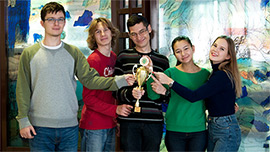 Students of the School of Ecology and Geography SibFU became winners of the V Interuniversity Environmental Cup, which was held in Novosibirsk on 18-19 October.
Students of the School of Ecology and Geography SibFU became winners of the V Interuniversity Environmental Cup, which was held in Novosibirsk on 18-19 October.
The Environmental Cup was aimed at drawing attention to issues of environmental protection and starting a discussion on environmental problems among students. 11 teams from Siberian universities took part in the event. The team of Dmitry Zlobin, Marina Rubleva, Ksenia Kotovshchikova, and Igor Kanyuk from the School of Ecology and Geography SibFU became winners at the event.
SibFU held public lectures on using stable isotopes in environmental studies
 Rolf Theodor Walter Siegwolf, visiting professor from the Paulya Sherera Institute (PSI), Bern, Switzerland gave public lectures in English for SibFU students on using stable isotopes in environmental studies.
Rolf Theodor Walter Siegwolf, visiting professor from the Paulya Sherera Institute (PSI), Bern, Switzerland gave public lectures in English for SibFU students on using stable isotopes in environmental studies.
- 9 October, room 44-12, 79 Prospekt Svobodny, Introduction, Definitions, Applications
- 11 October, room 44-12, 79 Prospekt Svobodny, Carbon and Nitrogen Isotopes in the ecosystem
- 12 October, room 44-12, 79 Prospekt Svobodny, Oxygen and Hydrogen Isotopes, from the ocean to the plants and soil
- 18 October, room 44-12, 79 Prospekt Svobodny, Answering questions and discussions
Public lecturers on biotechnology to be given in SibFU
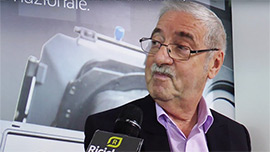 From 5 October to 9 October 2017, there will be open lecturers at SibFU by Guido Persoone, Dr.Sc., emeritus Professor from the Ghent University (Belgium), Director of Research and Development for MicroBioTests Inc. Guido Persoone (.pdf).
From 5 October to 9 October 2017, there will be open lecturers at SibFU by Guido Persoone, Dr.Sc., emeritus Professor from the Ghent University (Belgium), Director of Research and Development for MicroBioTests Inc. Guido Persoone (.pdf).
The world-renowned researcher in the field of environmental biology, applied ecology, toxicology will give lecturers on environmental toxicology in English during his visit.
New blog of SibFU researches: waste and income
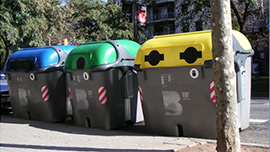 The SibFU website keeps publishing blogs of the University’s researchers. Ruslan Sharafutdinov, the Director of the School of Ecology and Geography, speaks about environment from a position of waste management: about the changes concerning environment that are happening in the world and expected in Russia.
The SibFU website keeps publishing blogs of the University’s researchers. Ruslan Sharafutdinov, the Director of the School of Ecology and Geography, speaks about environment from a position of waste management: about the changes concerning environment that are happening in the world and expected in Russia.
From the East to Europe: SibFU started international summer schools
Siberian Federal University started the traditional season of international summer schools. This year there will be 14 international summer schools with invited scientists and students from 27 international universities (Austria, the USA, the Great Britain, Hungary, Germany, Spain, Italy, China, the Netherlands, Poland, Taiwan, the Czech Republic, Sweden, etc.). There are various research fields studied at the summer schools: Climate Change Research, Environment, Sustainable Natural Resource Management, Efficiency of Resource Extraction, Physics, IT, Jurisprudence, Russian as a Foreign Language, Economics, Multicultural Mediation, and Innovative Engineering Technology.
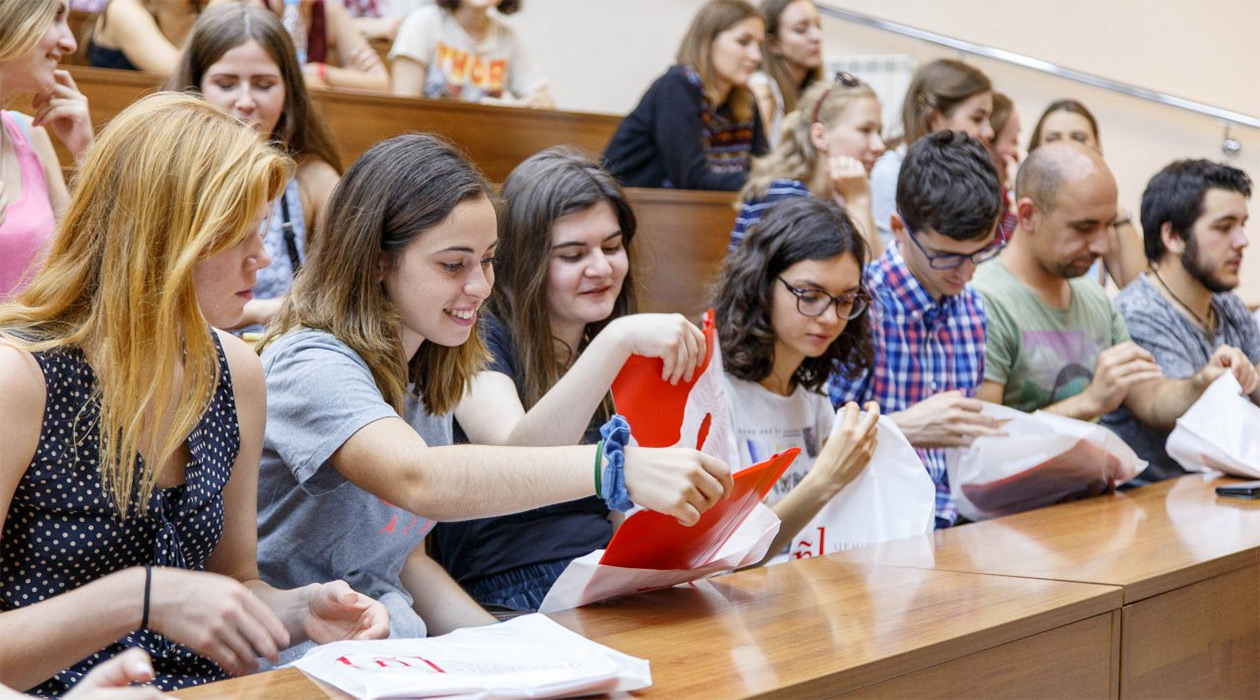
Krasnoyarsk will held International Field Summer School «Study of Bottom Contour and Coastal Processes of Reservoirs and Lakes»
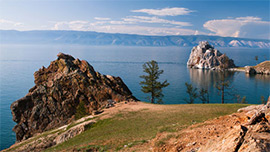
15 July 2017, Siberian Federal University starts International Field Summer School «Study of Bottom Contour and Coastal Processes of Reservoirs and Lakes». More than 30 people will explore geological structure of banks.
SibFU organized the conference on tree rings
 Siberian Federal University and Immanuel Kant Baltic Federal University have organized the unique scientific conference TRACE2017: Tree Rings in Archaeology, Climatology and Ecology.
Siberian Federal University and Immanuel Kant Baltic Federal University have organized the unique scientific conference TRACE2017: Tree Rings in Archaeology, Climatology and Ecology.
The event was held in Kaliningrad from 17 to 21 May 2017 and supported by The Association for Tree-Ring Research, an international scientific organization of dendrochronologists. According to the TRACE tradition, the conference was dedicated to promotion and support of network and scientific exchange of scientists and students in the field of dendrochronology. As one of the organizers said, the venue for the conference was chosen considering logistics; it was held in the westernmost city of Russia for the first time.
«We decided to organize this conference a year and a half ago, and then we made an arrangement with TRACE to hold it in Russia. And then they began to search for the most suitable location. Krasnoyarsk was not appropriate for the international participants because of its remote location. We have very good relations with Immanuel Kant Baltic Federal University, so I suggested holding the event in Kaliningrad. We are grateful to the management of the IKBFU and especially to the rector Andrey Klemeshev, who supported the idea.— Said Eugene Vaganov, SibFU Rector and Member of the Russian Academy of Sciences. —The sphere of tree rings studying is extensive, up-to-date, and very interesting. It has a serious cross-disciplinary potential. After all, knowledge from history, biology, and climatology is united in this sphere. In our Siberian Federal University we have formed research teams studying dendrochronology and now started several master’s and PhD programs. So this sphere is one of our leading priorities. IKBFU possesses serious equipment within ecological profile, for example, for monitoring, so I expect that our universities will be able to jointly develop this direction in future.
In addition, Kaliningrad region is of great interest. However, only a few research projects on tree rings were implemented. For example, there is an area called Dancing Forest on the Curonian Spit. There is a lot of hypothesis concerning this place, but no particular answers. Now we have new methods of research that allow investigating in details the state of things. The main result of the conference is cooperation of researchers, pooling of efforts, and possible forming of new productive research teams».
The conference gathered 200 leading experts from Russia, Germany, Italy, Holland, Switzerland, Spain, Estonia, Czech Republic, Serbia, Slovenia, Denmark, Belgium, Romania, Kyrgyzstan, Poland, and Belarus. The presentations of researchers were concerning the issues of archeology, climatology, geomorphology, glaciology, history of fires, forest dynamics, ecology, hydrology, plant physiology, ring tree studies, and tree anatomy.
Students of the School of Ecology and Geography will attend the Summer Institute at the USA
 Dmitry Zlobin, Evgenia Konovalenko, and Diana Lisenkova, students of the School of Ecology and Geography, SibFU, won the competition for participation in the four-week program of the Summer Institute on Global Environmental Issues.
Dmitry Zlobin, Evgenia Konovalenko, and Diana Lisenkova, students of the School of Ecology and Geography, SibFU, won the competition for participation in the four-week program of the Summer Institute on Global Environmental Issues.
Young people have achieved the opportunity to attend the universities of the six US cities, including Washington, New York, and New Hampshire, during August 2017, where they can get acquainted with green building, waste sorting and alternative energy sources, learn about eco-volunteering in the United States, and visit an organic farm using composting.
Within the Summer Institute, future ecologists will be able to share their experience with American students and discuss youth projects implemented in Russia and in the USA. All students will be offered to develop their own environmental projects based on their experience, so that their implementation could help the environmental development of their region. At the end of the year, there will be presentation and analysis of completed projects at the international meeting.
Vernadsky Foundation scholarships for students of environmental majors
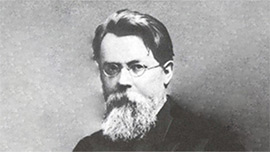 We invite SibFU students, mastering environmental sciences, to participate in the open competition for Vernadsky Foundation scholarships for students.
We invite SibFU students, mastering environmental sciences, to participate in the open competition for Vernadsky Foundation scholarships for students.
To take part in the competition, you need to submit a set of documents to the Academic Affairs Department of SibFU up to 15 February 2017.
Details about the competition are on the website in the section «Scholarships and grants for Students».
SibFU hosted Festival of Eco Vision — 2016
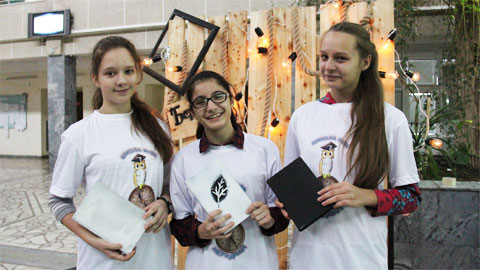 I Krasnoyarsk Interactive Ecological Festival Eco Vision — 2016 has been held in Siberian Federal University. The event was organized by the Committee for Natural Resources and Ecology of the Youth Advisory Council of Krasnoyarsk Territory, and School of Ecology and Geography, SibFU.
I Krasnoyarsk Interactive Ecological Festival Eco Vision — 2016 has been held in Siberian Federal University. The event was organized by the Committee for Natural Resources and Ecology of the Youth Advisory Council of Krasnoyarsk Territory, and School of Ecology and Geography, SibFU.
300 people attended the Eco Festival: pupils from 19 schools of Krasnoyarsk and students of 4 educational institutions from our city. During the event guests could attend:
- public lectures on global and regional environmental problems given by lecturers from School of Ecology and Geography;
- workshops for making stuffed toys and handicrafts from natural materials;
- exhibition of useful stuff from recycled materials ;
- activity for giving in waste paper, used light bulbs and batteries for recycling;
- educational quest “A Career of an Ecologist”;
- eco-debates on reducing the share of personal vehicles for solving environmental and social problems.
Ruslan Sharafutdinov, director of School of Ecology and Geography, told us that the main topic of the event was the responsibility of each person to protect nature.
“Each guest of the event had an opportunity to take a test on ecology and check their level of awareness. I shall note that the questions were directly related to the problems typical for our region: the state of the air and water, lack of green areas and uncontrolled waste disposal. The main point is that participants started to think about a contribution each person could make to improve the environmental situation”.
According to Dmitry Zlobin, student of School of Ecology and Geography, head of the Committee for Natural Resources and Ecology of the Youth Advisory Council of Krasnoyarsk Territory, discussion on waste sorting and operation of the system in different countries was also extremely interesting and vigorous.
“Experts and people from the audience debated about reduction of natural resources and environmental pollution. The speakers were from the leaders of regional public environmental organizations and a special guest from France, who gave a talk about art objects as a form of public service announcement”.
Policy on sustainable campus citizens commuting
Siberian Universities Launch the Project “Energy of the Future”
“Energy of the Future” is a joint educational project of the company En + Group and the Corporate University “EuroSibEnergo”.
The project educational sessions devoted to technologies of the future will be held at Siberian Federal University and Irkutsk State Technical University. The lecturers will be delivered by eminent experts: scientists, heads of industrial companies and other professionals in the field of technology.
The project's organizers emphasize that the key assets and new projects of the holding are located in the Eastern Siberia, therefore one of the priority objectives of the project is to promote the level of general awareness of students from Irkutsk and Krasnoyarsk energy studies-related universities on new technologies and trends of the development.
Krasnoyarsk session will be devoted climate and ecology issues of the project. Topics for further sessions in 2016-2017 academic year go as follows: the future of cloud computing, new technologies in the coal industry and “green”.
Summer School on Biodiversity Opened at SibFU
 July 11, 2016 Siberian Federal University opened the Second International Summer School “Monitoring and Early Warning of Risks in the Management of Biodiversity”.
July 11, 2016 Siberian Federal University opened the Second International Summer School “Monitoring and Early Warning of Risks in the Management of Biodiversity”.
The school is funded by the grant of the European Union Erasmus + , the program for Jean Monnet and the Participation SibFU in the Russian Academic Excellence Project 5-100. Among the participants of the school there are 25 students from the educational, scientific and public organizations of Russia, India, Hungary, Italy and Iran. The teaching staff includes both representatives of the FAS (including post-docs from the Czech Republic and Spain), as well as partner organizations from Russia, Hungary, the Netherlands and Sweden.
According to one of the organizers of the school from the Central European University (Hungary) Anton Shkarubo, the goal of the international Summer School is a call for analysis and possible solutions to overcome the problems of economic growth and development challenges:
“the science of environmental protection in today's world is becoming a multi-disciplinary environment. It weaves a lot of social and political aspects. This academic field is still relatively underdeveloped in the Russian academic tradition, while the society demanded specialists able to understand not only what occurs in nature, but in fact, why it happens and how it is related to other, non-natural processes. For example, knowledge on quite a “hipster” scientific area of early recognition and prevention of environmental problems is the exclusive knowledge that students will be able to get only in our school”.
International Summer Scientific School on Dendroecology Held in Khakassia
 August 2, 2016. The International Summer Scientific School “Ecology of Plants and Digital Anatomy of Wood” opened in Abakan. The co-organizer of the school is a branch of SibFU — Khakassia Technical Institute.
August 2, 2016. The International Summer Scientific School “Ecology of Plants and Digital Anatomy of Wood” opened in Abakan. The co-organizer of the school is a branch of SibFU — Khakassia Technical Institute.
The school is held in association with the Swiss National Research Institute of snow, forests and landscape (WSL) and Siberian Federal University, with the support of the Association of Studies of tree rings, Forest Institute of the SB RAS and the energy company “RusHydro”.
The participants of the school are sixty students, graduate students and young scientists from Russia, Switzerland, Italy, Poland, Spain, Kyrgyzstan, Azerbaijan, as well as high school students of Abakan. During the week they will attend the lectures on basic principles and methods of dendroecology, xylem anatomy and will apply the gained knowledge on the evaluation of climatic and geomorphological processes, forest fires, forest ecosystem dynamics, hydrology and plant physiology.
The Field School of SibFU Studies Coastal Processes of Water Reservoirs
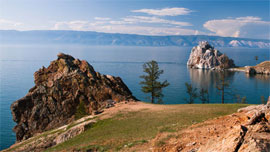 July 15, 2016. Siberian Federal University hosts the International Summer School field seminar dedicated to the 50th anniversary of the Krasnoyarsk Water Reservoir filling. More than thirty participants of the seminar came to study the bottom topography and coastal processes in the reservoir.
July 15, 2016. Siberian Federal University hosts the International Summer School field seminar dedicated to the 50th anniversary of the Krasnoyarsk Water Reservoir filling. More than thirty participants of the seminar came to study the bottom topography and coastal processes in the reservoir.
The Head of the School, Professor of SibFU, Doctor of Geography, Galina Yamskikh pointed out that the main purpose of the school was to develop students' skills to work with modern devices in the reservoir water area:
“For us it is important to test the equipment purchased for the Department of Geography. We are planning to create a youth center, a laboratory, where students, young researchers will conduct their research and monitor coastal zones of the reservoir. On the territory of the region there is a large number of reservoirs, but experts, unfortunately, are few. In the training of such experts we rely on the assistance of the invited Russian colleagues and foreign scientists-lecturers”.
Students of the Motorsport Center of SibFU Restore the Ecological Symbol
A team from the Motosport Center of SibFU are going to visit Mana Lake District (Partisansky Territory) to install a symbolic sign, marking the territory as the “Living Belt of the Planet”, where mining and construction of industrial facilities are strictly prohibited. The expedition with two cars starts on July 28, 2015.
The International Environmental Project “NEO” — “the Living Belt of the Planet” was established in 1998 on the initiative of Russian and foreign astronauts. It was then that the first zone of “the belt” was marked — the Putorana Plateau (Evenkia). The area of the plateau of more than 11 million hectares is free of all industrial activities, as they were banned by the local authorities.
In 2001 the leadership of the Partisansky Territory announced that the area of additional 81 thousand hectares is to be included into the emergency reserve of the planet. The symbol of this was the opened metal ring with a diameter of 4 meters installed on Mana Lake.
Public Lecture by British Climatologist Malcolm K. Hughes at SibFU
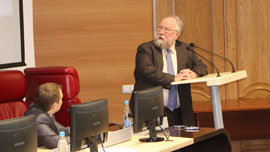 September 2, 2010. SibFU will become a venue for a lecture by Professor Malcolm K. Hughes from the Great Britain. The title of the lecture will be “Strange Times on Planet Earth?” and it will be devoted to the global climate change on the planet. Organizers of the lecture: Siberian Federal University and the US Fund for Civilian Research and Development.
September 2, 2010. SibFU will become a venue for a lecture by Professor Malcolm K. Hughes from the Great Britain. The title of the lecture will be “Strange Times on Planet Earth?” and it will be devoted to the global climate change on the planet. Organizers of the lecture: Siberian Federal University and the US Fund for Civilian Research and Development.
Whether the anomalous Moscow heat foretells the inevitable global warming in the future? Whether the harsh Siberian cold proves that any warming is not expected? How to use air bubbles in the millennial ice or annual rings of trees as indicators on past climates?
The scientist will share his observations about the dynamics of climate change in the context of the last decade, hundreds of thousands of years and will talk about the reasons for his hesitation.
“No doctor can tell whether the patient is really sick, if the doctor has never seen a healthy one. Years of research by thousands of scientists indicate that the current climate is undergoing significant changes. The concentration of greenhouse gases over the last 20-30 years has reached a state, in which it has never been”— Malcolm Hughes says.
Scientists Have Proposed to Implement Global Urban Trends in Krasnoyarsk
January 21, 2016. Siberian Federal University hosted the round table titled “Global and Russian Trends of Urban Studies. Krasnoyarsk is a City for Life”. The round table united scientists of Krasnoyarsk and Moscow-city planners, as well as businessmen, government officials and builders.
A professor of SibFU Irina Kukina identified a few global urban development and construction trends in her report:
“The modern urban science describes a number of global trends: the expansion of the functions of the lower tier of houses, the principle of landscape-ecological outlook, the vector from segregation to integration of housing development. Another remarkable feature is strengthening of local government functions: more and more people are included in the planning of the city, more often we see reports that the residents made a decision on a question related to the landscaping. Most citizens want their house to be close to good comfortable places of living, close to small parks. This is another reason why large enterprises tend to leave the city environment. Another trend is preservation of historic low-rise blocks”.
SibFU Students of improved wheelchair for Paralympic Games in curling
Students of the School of Non-Ferrous Metals and Materials Science SibFU have designed and manufactured a multi-purpose support for a wheelchair that will provide athletes with additional comfort while playing Paralympic curling.
“We received a request from a curler with special needs who had difficulties with playing process in curling. According to him, it was extremely inconvenient to push a stone (20 kilograms) sitting in a wheelchair without any support, so he had to bend strongly, holding the wheel. There is a special equipment abroad for adaptive sports, but it is expensive and hardly accessible for players from Russia. We decided to take it into account and make an analogue support for a wheelchair using available parts and with a lower prime cost,”said Natalia Donetskaya, head of the project group, 2nd-year student, School of Non-Ferrous Metals and Materials Science.
The students designed two holders with U-shaped and central fasteners that are easily placed on an ordinary wheelchair. That allows athletes with special need to improve playing process by laying the correct direction of the throw and increasing its strength from a safe position. The equipment was successfully tested and handed over to the athlete of the Regional Curling Federation.
Krasnoyarsk Social Services showed interest in the work of the SibFU students. They are negotiating the development of various household appliances that will enhance everyday comfort and quality of life of people with special needs. The students are planning to design special tables suitable for owners of wheelchairs and fasteners for runners to the front wheels for moving over snow.
We can add that the project of the support for a wheelchair was presented at the exhibition of projects by students of CDIO engineering bachelor program. Project design and active learning methods are the basis of CDIO, the international education initiative implemented by the School of Nonferrous Metals and Materials Science and the Polytechnic School, Siberian Federal University.
26 June 2018
Submitting applications for participation at International School «Data Analysis in Tree-Ring Research»
 Siberian Federal University together with Baltic Federal University and the Association for Tree-Ring Research invites research fellows, postgraduates and students to take part in the international school «Data Analysis in Tree-Ring Research». It will be held in the city of Svetlogorsk, Kaliningrad Region, on 16–17 May 2017.
Siberian Federal University together with Baltic Federal University and the Association for Tree-Ring Research invites research fellows, postgraduates and students to take part in the international school «Data Analysis in Tree-Ring Research». It will be held in the city of Svetlogorsk, Kaliningrad Region, on 16–17 May 2017.
The School will be held within the Conference «Tree Rings in Archaeology, Climatology and Ecology» (TRACE 2017). Language of the event is English.
The School program consists of several master classes; it is available on the School's website. To take part in the event, you need to pay for master classes you would like to attend. The cost of one master class is 20 Euros (coffee-break and lunch are included).
SibFU entered NESEFF
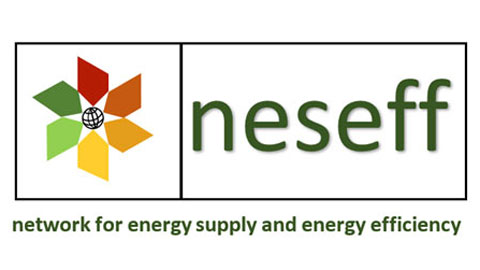 Siberian Federal University has become a full member of NESEFF (network for energy supply and energy efficiency) – a network for partner European and CIS universities specializing on energy supply and energy efficiency. The agreement was signed on 14 November 2016.
Siberian Federal University has become a full member of NESEFF (network for energy supply and energy efficiency) – a network for partner European and CIS universities specializing on energy supply and energy efficiency. The agreement was signed on 14 November 2016.
According to Rashit Nazirov, advisor to the rector of SibFU, NESEFF unites educational institutions of German, Azerbaijan, Russia, Ukraine, Czech Republic, and Poland.
“Aim of the partnership is to organize scientific exchange on regular basis for specialists in energy supply and energy efficiency and to focus public attention on energy conservation and particularly on energy sustainability of the society”.
Challenges to be solved under the Agreement:
- scientific exchange on regular basis;
- professional development of employees;
- information provision for government bodies, establishments, associations, etc. and their consultation in the field of power engineering;
- support of continuous education of students in this field.
We should add that operation of NESEFF is supported by the Institute of Environmental Technology and Recycling (Germany).
Scientists of SibFU Have Presented Educational Developments at a UNESCO Forum
Pioneering developments of didactics of sustainable development were presented at the international forum “Saving Humankind as an Imperative for Sustainable Development”, the deputy head of the UNESCO Chair of Siberian Federal University, Associate Professor, and PhD Anatoly Kozlov. The scientific forum under the auspices of UNESCO was held in Kazan on September 14-16, 2016.
The didactic system developed by SibFU research scientists is based on the integration of the material of studied disciplines with applied dialectics – a science on the development of the emerging theory of inventive problem solving and applicable in university and pre-university education. It allows to create a new component of human culture — a culture of innovation and moral values.
According to the authors, the didactics has been successfully tested in the project activities of SibFU students and secondary school graduates. It has been included in the methodological support of the "New Polytechnic School" — a network of engineering and technology classes created in schools, lyceums and gymnasiums of Krasnoyarsk region with the support of the Governor Viktor Tolokonsky.
The President of the University the Arctic Visited SibFU
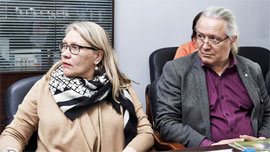 April 12, 2016. The delegation of the University of the Arctic headed by the President Lars Kullerud visited SibFU. University of the Arctic brings together universities, colleges and other organizations working in the field of higher education and research in the North.
April 12, 2016. The delegation of the University of the Arctic headed by the President Lars Kullerud visited SibFU. University of the Arctic brings together universities, colleges and other organizations working in the field of higher education and research in the North.
During the meeting with representatives of the institution and the curators of scientific fields at SibFU, who conduct research on Arctic topics, the guests discussed the prospects of commercialization of science and technology in the North. It is worth of note that this issue has been on the scientific agenda of one of the thematic networks, which unites the University of Saskatchewan (Canada), the Yukon College (Canada), University of Tromsø — The Arctic University of Norway, Nordland University (Norway), University of Oulu (Finland). The thematic network cooperates with the authorities, business associations, private and public companies in relation to the following issues:
- practical application of innovative products;
- eliminate barriers to innovation in the North;
- investment in the infrastructure of the northern regions.
Lars Kullerud called SibFU one of the most important members of the community.
“I have heard a lot about your university and talked with its representatives, but I have never been here before. We would like to personally assess the inclusiveness of scientists and students into our common project. We, representatives of science, are out of politics, therefor we perceive the Arctic as a field of our common scientific interests”,— Lars Kullerud explained the purpose of the visit.
He also said that within a year a special agreement between the universities and the scientific community, which are part of the University of the Arctic, can be signed. The agreement provides for joint research and implementation of programs of academic mobility of students in the universities of Russia, Canada, the United States and the five Arctic countries: Sweden, Norway, Finland, Denmark, Iceland.
Siberian Federal University signed an agreement for wastewater treatment with the company "KrasKom"
KrasKom - this is a company with a long record of work and proven efficiency of water treatment and wastewater treatment methods. According to the information located on the official website of the company, the sewage water that has passed all stages of purification is 100% safe for humans and the environment. According to this, under a water consumption contract, wastewater from water supply units without preliminary treatment passes into the central city sewer system for four-stage treatment.
Agreement for wastewater treatment with the company "KrasKom"
Siberian Federal University signed an agreement for recycling waste with the company "Krasnoyarsk recycling company"
Siberian Federal University has concluded the contract with a Krasnoyarsk recycling company, which is responsible for collecting, sorting, and delivering waste to processing plants, providing a report afterwards.
The program on waste sorting is launched on campus. The university has installed recycling bins and containers of different capacity: 70 liters, 120 liters, 240 liters, and even three containers of 3000 liters, for separating plastics, paper, and e-waste. Moreover, after Universiade there was an increase in the number of tanks of 1000 liters in the amount of 70. Also, in accordance with FISU standards, the campus organizing committee was encouraged to use recyclable or biodegradable materials in the provision of food and beverage services while holding the event. This experience remained with the university.
The Administration of Krasnoyarsk transferred a forest area of 275.5 hectares to Siberian Federal University for permanent use, in order to carry out nature conservation, reforestation and research activities.
Regulations on the organization of work of the Student Nutrition Center
SibFU Toxic Waste Handled Report.pdf
Ecological Headquarters of the Krasnoyarsk Region
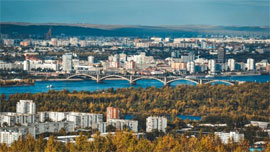 Ecological headquarters of the Krasnoyarsk Region was created according to the initiative of Siberian Federal University, representatives of public organizations, the leadership of the region and the city of Krasnoyarsk. The decision to create it was made as a result of public hearings “On the ecological situation in the city of Krasnoyarsk, immediate and strategic measures for its improvement”, which were held April 7, 2016.
Ecological headquarters of the Krasnoyarsk Region was created according to the initiative of Siberian Federal University, representatives of public organizations, the leadership of the region and the city of Krasnoyarsk. The decision to create it was made as a result of public hearings “On the ecological situation in the city of Krasnoyarsk, immediate and strategic measures for its improvement”, which were held April 7, 2016.
The main objectives of the headquarters:
- the launch of processes for “environmental improvement” of the city of Krasnoyarsk,
- the formation of a coalition for the development of solutions to environmental problems,
- coordination of efforts of government, business and society to improve the ecological situation in the city and region,
- monitoring and quality control of the execution of decisions in the environmental field.
The chairperson of the Environmental Headquarters of SibFU President Alexander Uss:
“We expect that all stakeholders and social organizations will be able to coordinate their actions through the framework of the Ecological Headquarters of SibFU. Hence, SibFU will become a platform for regular discussions on environmental issues and a venue for very thorough, objective and profound investigations and research of problematic situations, as well as the actions of the government, major businesses, one way or another involved in the process.
Establishment of the headquarters is an urgent measure, which is necessary to address the pressing environmental problems of the city of Krasnoyarsk. The ecological headquarters must become a driver of improvement processes for the environment of the capital of the region, a driver of the restoration of the natural recreational potential of Krasnoyarsk City”.
As part of the environmental sustainability practices various youth organizations and associations are implementing a number of projects and initiatives at SibFU.
Thus, the department of youth projects of SibFU twice a year — in spring and in autumn — holds Green Project — a set of measures for the collection of waste paper, plastics and used batteries. Since 2015 SibFU employees can take part in the event and deliver waste paper at any time. The Youth Union of SibFU with the support of the Forest Stewardship Council, and the World Wildlife Fund annually organize the ecological FSC-Friday for university students. The event aims to draw attention to forest issues and is organized in the form of a team intellectual-entertaining game.
As part of its work the Volunteer Center of SibFU attracts volunteers for solving the problems of preservation, protection and environmental cleanup activities. The sports and ecological game “Stolby Reserve Cleanup” and collection of garbage on the banks of the Yenisei River are among the annual events and campaigns organized by the center. The primary trade union organization of students of SibFU organizes the event “Clean Forest” every year in May. The cleanup of the birch grove takes place in the Oktyabrsky district of Krasnoyarsk. So, the last time the event was attended by 200 students, 98 bags of garbage were collected, including furniture, construction waste, clothing and tires. Since 2016 the student union has been implementing the project “Clean Campus”, participants of which clean the campus and surrounding areas.
In addition, the unique project for Krasnoyarsk "0% BLACK SKY!" was launched in 2016. The project allows any townspeople to check if their car emissions meet the existing Russian standards. All cars, which have undergone the test, receive a “Card of Car Emissions Toxicity”, which contains an assessment of five parameters, including the content of such harmful substances as CO and CH.
Environmental Event “Clean Forest” at SibFU
On 20 May 2020, Students Union of Siberian Federal University held the environmental event “Clean Forest” in a birch grove near the University. The event was organized as a quest, so that participants had to move from one point of the quest to another, solving tasks and collecting garbage along the way.
Also within the event, SibFU Green Project installed the eco-point for collecting waste paper, PET bottles, and batteries. People could deliver both garbage found in the grove and bring it from home.
Recyclables Collection Experience of SibFU Ecologists One of the Best in Russia
Siberian Federal University became a prize-winner of Russian Environmental Quest “Share with Us” dedicated to implementing waste sorting in higher education institutions and interactive eco-education of young people.
During the quest, students had to complete 15 tasks, for example, designing layouts of social advertising and searching for a waste processing company.
So, the team of the School of Ecology and Geography SibFU collected more than a ton of recyclable waste, such as paper, glass, and plastic. Besides, three containers of 3.5 cubic meters were installed on campus for waste paper and glass. In the nearest future, the SibFU team plans to set 16 containers for waste sorting on the territory of the University.
As a result, the universities that have implemented waste sorting are invited to join the Association of Green Universities of Russia with teams of students from 28 Russian universities, among which are Moscow State Institute of International Relations, Peoples' Friendship University of Russia, Saint Petersburg State University. Members of the winning teams and winners have been recommended to participate in the Russia Youth Environmental Program (RYEP) for an environmental internship in the USA.
The award ceremony of the winning teams took place at the II All-Russian Assembly of the Association of Green Universities on the topic “Development of student ecological movement in Russia” in Moscow.
Offsite Workshop from School of Eco-Volunteers in Achinsk
On 10 March 2021, the city of Achinsk held the workshop for School of Eco-Volunteers of the Krasnoyarsk Territory. Professors of Siberian Federal University and experts from regional department of Ministry of Ecology and Efficient Nature Resource Management gave lectures on environmental legislation for more than 50 participants.
Prospective eco-volunteers had an intensive training course. They got a basic understanding of environmental legislation and ecotourism, learned about violations in the conservation of wildlife, water and soil, subsoil management and atmospheric air. After completing the course students passed the test and achieved certificates of eco-volunteers. In the future, they will perform inspections to reveal illegal dumping and pollution of small rivers together with environmental inspectors from the Ministry of Ecology and Efficient Nature Resource Management of the Krasnoyarsk Territory.
“
It is extremely important that the students of the workshop had the opportunity to achieve both theoretical knowledge and practical skills in implementing public environmental monitoring. Also, volunteers performed environmental audits with acting environmental inspectors. We are planning to hold such workshops 3-4 times a year. Moreover, they are free to access. You simply need a desire to make the world a better place,”said Ruslan Sharafutdinov, the director of the School of Ecology and Geography SibFU.
Results of an autumn event Green Project SibFU
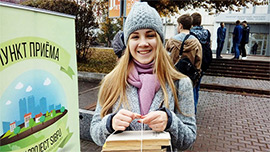
153 students and employees of the University took part in the annual environmental event Green Project SibFU. With the help of volunteers from the SibFU Voluntary Center and student teams 6,100 kg of wasted paper, 71 kg of plastic, and 28 kg of batteries were collected.
The intellectual game Eco-Quest dedicated to the Year of Ecology in Russia took place at SibFU

Volunteer Centre of Siberian Federal University organized an intellectual game Eco-Quest for pupils of Krasnoyarsk schools on 14 October.
SibFU invited pupils of the 3rd and 4th grades. During the intellectual game scholars tested their knowledge of ecology and got acquainted with the history of this science. In total, 6 schools of Krasnoyarsk participated in the event.
Each team received certificates of participants, gift vouchers and brand bracelets from SibFU Volunteer Centre, and the winners got the first place award certificate.
Anna Pankova, team-leader, SibFU Volunteer Centre, shared her event impressions:
«The quest was excellent! The players, pupils of 3-4 grades, really enjoyed it. We believe that it is essential to instil an ecological culture in children of primary school, because character and most of habits are formed at their age. The most important is that we see and feel the feedback from the children and their appreciation. I think we are ready to continue working with this audience».
An autumn event Green Project on collecting waste paper to be held at SibFU
6, 13 and 20 October 2021 SibFU will run an annual autumn environmental event Green Project on collecting waste paper, PET plastics, and electric batteries. All students and staff members are invited to participate in the event.
SibFU Volunteers checked ecological compatibility of automobiles in Krasnoyarsk

21 September 2021, Volunteer Centre of Siberian Federal University held the event within World Car-Free Day. Everyone could pass a quick test to measure car emissions with modern equipment, a gas analyser, and see whether their vehicles meet environmental standards.
50 motorists took part in the event. The objective was to show car enthusiasts the harm their vehicles do to nature.
According to the measurement results, 87 % of the vehicles at the event met standards, and their owners were presented special stickers with the inscription «Tested by SibFU Volunteer Centre».
Kristina Patrina, Head of the Volunteer Centre, SibFU:
«It is very important for us to organize events aimed at preserving and protecting the environment. Environmental direction is one of our priorities. We were pleased with the fact that 87 % of the vehicles showed good results. We hope that by holding this event we will inspire some people to give up their cars on the World Car-Free Day. And together we will make our city cleaner!»
Festival of Health to be held at SibFU again
 On the eve of World No Tobacco Day, team of headquarters «Run after me! SibFU» invites to take part in traditional event of the Health Festival «Uniting Generations» and start a healthy lifestyle.
On the eve of World No Tobacco Day, team of headquarters «Run after me! SibFU» invites to take part in traditional event of the Health Festival «Uniting Generations» and start a healthy lifestyle.
There are three fascinating sport locations waiting for guests and participants of the events:
- Interactive location: trainings from the best fitness instructors from the leading sports clubs of Krasnoyarsk; unique and thrilling performances from extreme athletes and professional dancers, coachers from the headquarters;
- Competitive location: you can take part in a relay or cheer for the runners. Sports spirit and desire for victory unites teams of students and staff members from SibFU, pupils and students from educational institutions of Krasnoyarsk, as well as teams of partner organizations;
- Information location: master classes from partners and coaches of headquarters, hitting qualifying standards of Association of student sports clubs of Russia; getting personal advice on proper nutrition from certified instructors and experts; learning about rules of a healthy lifestyle from the AntiAIDS centre, and checking a status of a respiratory system with smokerlyzer by students of Krasnoyarsk State Medical University.
Results of spring collecting within environmental event «Green Project SibFU»
 On 14, 21, and 28 April 2017 all sites of the University took part in the traditional environmental event «Green Project SibFU». 164 students, lecturers and staff members attended the event.
On 14, 21, and 28 April 2017 all sites of the University took part in the traditional environmental event «Green Project SibFU». 164 students, lecturers and staff members attended the event.
With the help of Volunteer Center, Youth Center of the School of Ecology and Geography and Students' teams, 5,892 kg of waste paper, 88 kg of plastic, and 57 kg of electric batteries were collected at the 5 sites of the University.
A pleasant feature of the spring event was organization of garbage collection points by 14 Krasnoyarsk secondary schools on their territory under the auspices of the University event «Green project SibFU».
In the nearest future the organizers of the event will contact the staff members, who took part in the event, to exchange waste paper for office supplies.
 In October 2015 the SibFU joined the federal Project 5-100, which is supposed to enhance the international competitiveness of the Russian universities among the world’s leading research and education centers. The project involves 21 universities now.
In October 2015 the SibFU joined the federal Project 5-100, which is supposed to enhance the international competitiveness of the Russian universities among the world’s leading research and education centers. The project involves 21 universities now.
For joining the project, the SibFU has developed and presented the Program to improve the international competitiveness, which continues the SibFU Development Program for the 2011-2021 in the part of the arrangements aimed at the University to access the global research and education market. Applied significance of the program — the promotion of the SibFU in the international rankings.
Overall, the expected result of the Project 5-100 by the year 2020 is the entry of at least five Russian universities in the first hundred of the global education rankings.

 Siberian Federal University
Siberian Federal University 


